Every Warhammer 40,000 game, ranked
PC Gamer Ranked are our ridiculously comprehensive lists of the best, worst, and everything in-between from every corner of PC gaming.
The first edition of tabletop wargame Warhammer 40,000 in 1987 nailed the setting's tone right away. It described humanity's future in bleak terms, summing up what it's like to be a citizen of the Imperium like this: "To be a man in such times is to be one amongst untold billions. It is to live in the cruellest and most bloody regime imaginable."
The back cover blurb was no less pessimistic. "There is no time for Peace," it declared. "No respite, No forgiveness. There is only WAR."
Though frequently balanced by a tongue-in-cheek sense of the absurd, the various adaptations of Warhammer 40,000 that followed delighted in its grimness. In the board game Space Hulk, doomed space marines are beamed onto derelict craft in oversized power armor and then hunted by aliens through corridors they can barely turn around in. In the Eisenhorn novels, an Imperial Inquisitor, so scarred by torture he loses the ability to smile, makes compromise after compromise until he's indistinguishable from those he hunts. In the miniatures game Necromunda, the underclass at the bottom of the hive city live on a diet of mould, rats, and food made from the recycled dead. You can practically hear the writers striving to outdo each other.
At their best, videogames have taken the same glee in depicting this baroque world, its cursed inhabitants, and their awful fates. At other times they seem more like the cyberpunk COOL FUTURE meme with power armor on. And there are a lot of them. They can't all be winners.
The Criteria
Number of entries: 42. New and altered entries in the latest update are marked 💀.
What's included: Every Warhammer 40,000 game on PC, including those in the Horus Heresy setting, which rewinds the clock 10,000 years to depict the downfall of the Imperium and how it got so messed up.
What's not included: Games that were cancelled before full release like the MOBA Dark Nexus Arena, which was briefly available in Early Access. Standalone expansions like Dawn of War: Dark Crusade and Inquisitor—Prophecy are considered part of the original game, like regular expansions. Games in the Old World and Age of Sigmar settings are in a separate ranking of every Warhammer Fantasy game.
And now: Every Warhammer 40,000 game, ranked from worst to best.
42. Carnage Champions (2016)
Roadhouse Games
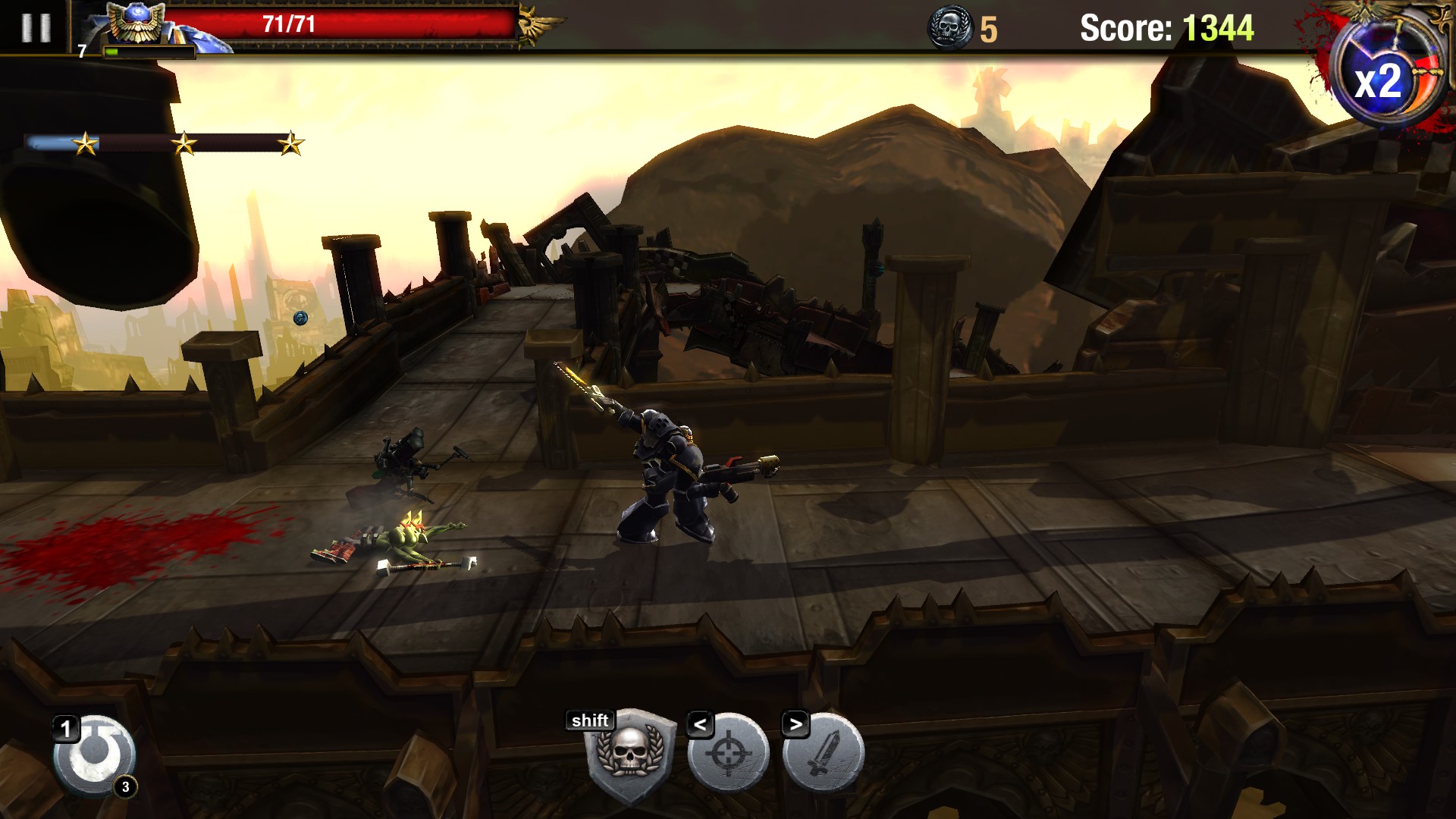
Carnage was a sidescrolling autorunner, Canabalt with a thunder hammer and a heavy metal soundtrack. At some point the server was taken offline and now this game—this entirely singleplayer game, I should note—no longer runs whether you got the free-to-play mobile version or paid actual money for the now-delisted Steam version. This, obviously, sucks.
41. Kill Team (2014)
Nomad Games/Sega
Steam
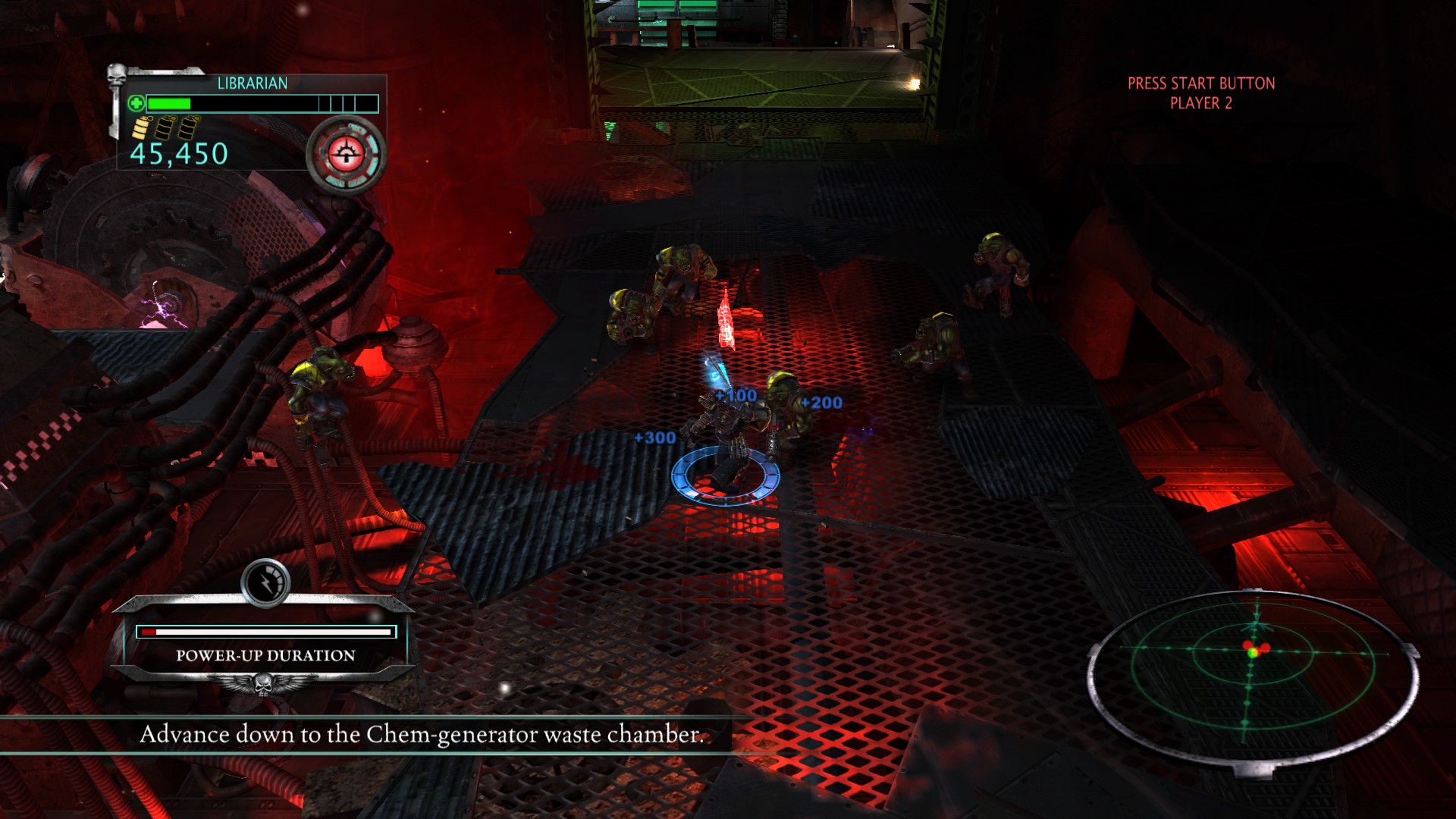
No relation to the tabletop game called Kill Team that lets you play 40K on a budget, this is a twin-stick shooter made with repackaged assets courtesy of Relic's Dawn of War 2 and Space Marine. The co-op is local only, which is a shame, and checkpoints before boss introductions are always annoying, but what really sinks it is the camera consistently swinging into the worst positions. You'll be staring at some pipes and a gantry while 15 orks shout the same recycled "Waaagh!" and murder you somewhere in the blackness taking up the rest of your screen.
40. Talisman: The Horus Heresy (2016)
Nomad Games
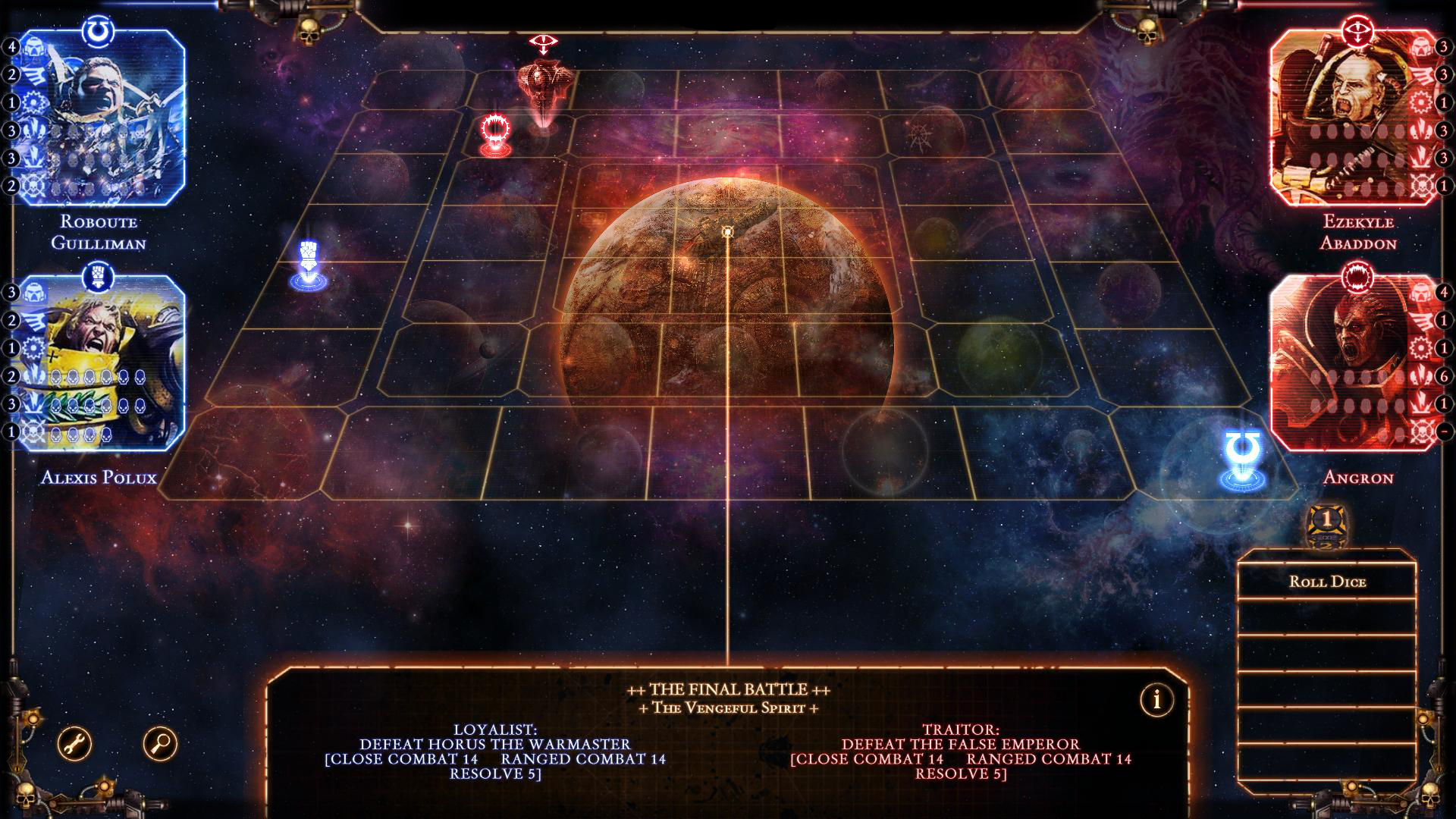
Games Workshop released the first version of Talisman: The Magical Quest Game in 1983. It was a race-to-the-centre board game, half of which you spent finding a talisman to let you access the middle of the board, and the other half not letting someone else steal it from you. Even if the other players didn't drag you down, the luck of the cards and dice would. It was fantasy Snakes & Ladders with PvP.
This videogame reskins it with The Horus Heresy, a prequel setting 10,000 years in 40K's past that's been the basis for a huge amount of novels, some of which are actually good. It's an even more desperate and serious version of Warhammer 40,000, completely at odds with a chaotic beer-and-pretzels game about chucking dice and laughing at your latest misfortune. In the original board game players got turned into toads on the regular. In Talisman: The Horus Heresy someone might find a card that gives them +1 to the Resource stat and consider it an exciting turn.
39. Space Hulk: Vengeance of the Blood Angels (1996)
Krisalis/Electronic Arts
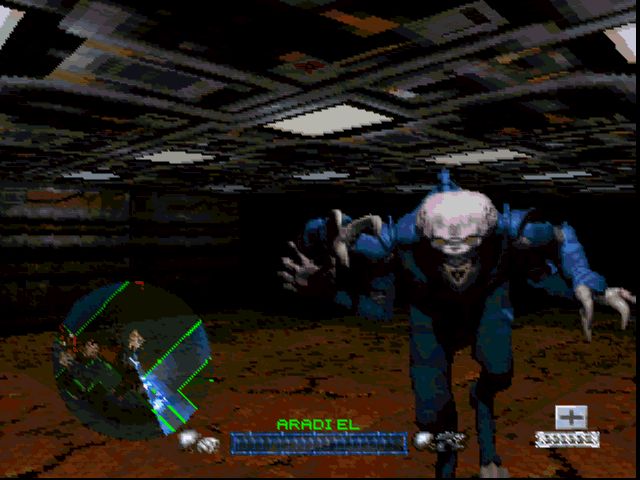
This was the second attempt at adapting the board game Space Hulk, and the worst. It's a first-person shooter where you get to control a squad, except the first six missions of the campaign don't actually let you. Once you do take command, it's just pausing to drop commands on the map, which is both less innovative than its 1993 predecessor with its realtime/turn-based combo and less satisfying than having full control over them.
The big problem with Vengeance of the Blood Angels is that it came when 3D graphics and CD audio were new and experimental and rarely any good. Everything's stuttery and enemies awkwardly pop into rendered CG when they're close enough for a melee animation. The marines are chatty, but their dialogue is stitched together from samples. The way they bark "SAPHON / search this area for / AN ARCHIVED RECORD" and "I haven't found / AN ARCHIVED RECORD" at each other will make you long for their death, especially when BETH-OR! shouts his name with the same cadence every time he's selected. It's entirely charmless, and not worth setting up the virtual machine you'll need to get it running today.
38. Space Wolf (2017)
HeroCraft PC
Steam
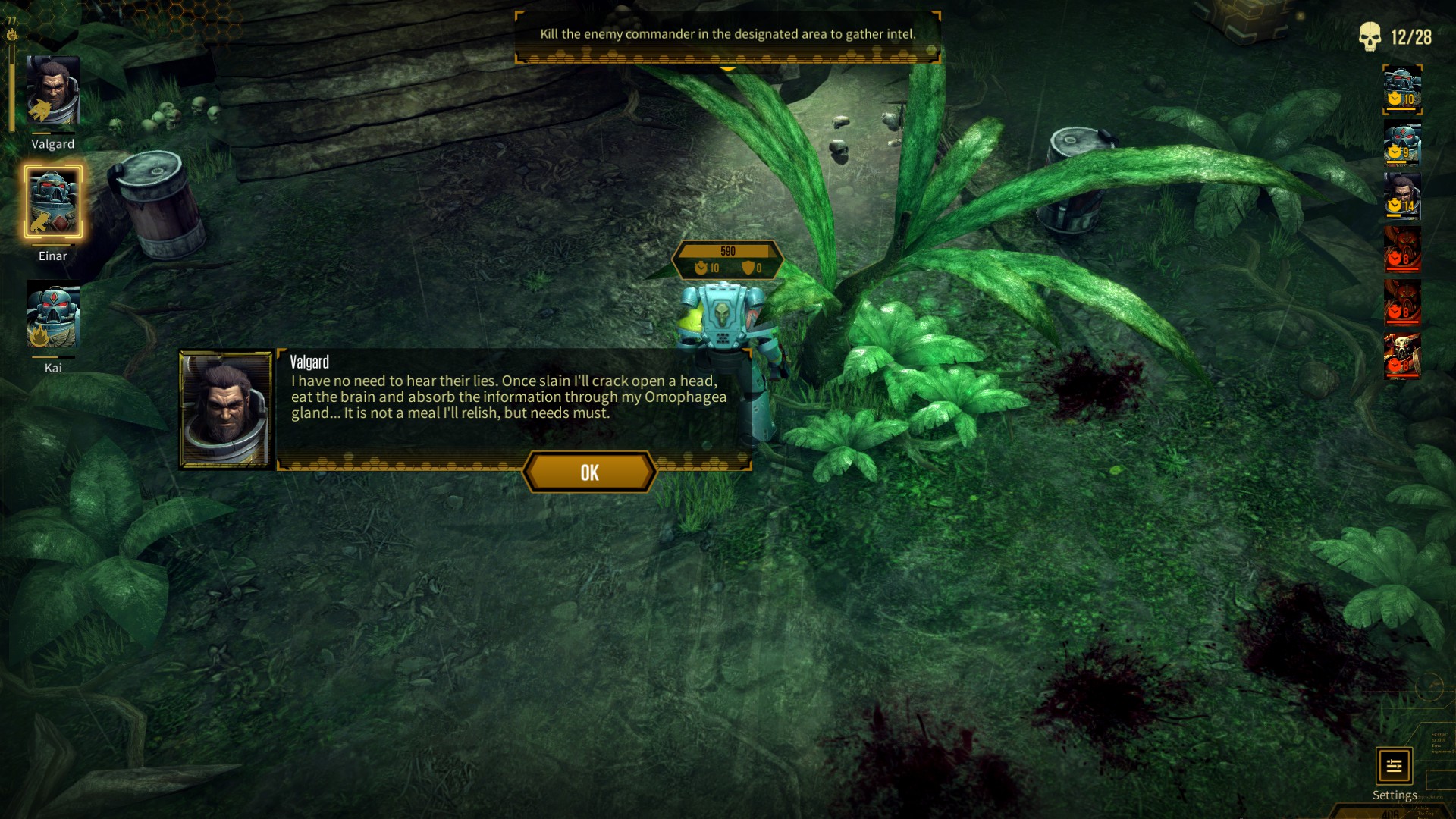
40K + XCOM is such an obvious idea the Steam Workshop is full of mods for XCOM 2 that combine the two. Games that attempt the same have been a mixed bag. Space Wolf looks the part, even zooming in on dramatic attacks just like XCOM does, but it doesn't play the part as well.
The levels are tiny, which makes weapon ranges weird—a boltgun is only able to shoot four squares—and when new enemies spawn they're immediately next to you. Plus, every character has a deck of cards and the only way to attack is to play one of the weapon cards you've randomly drawn. Your marine can shoot a plasma gun when he's got the card for it, and then just forget it exists until you draw another plasma gun card. Depending on the luck of the draw, in the meantime he might suddenly have three different heavy weapons, somehow pulling them out of nowhere like they're in a bag of holding.
37. Storm of Vengeance (2014)
Eutechnyx
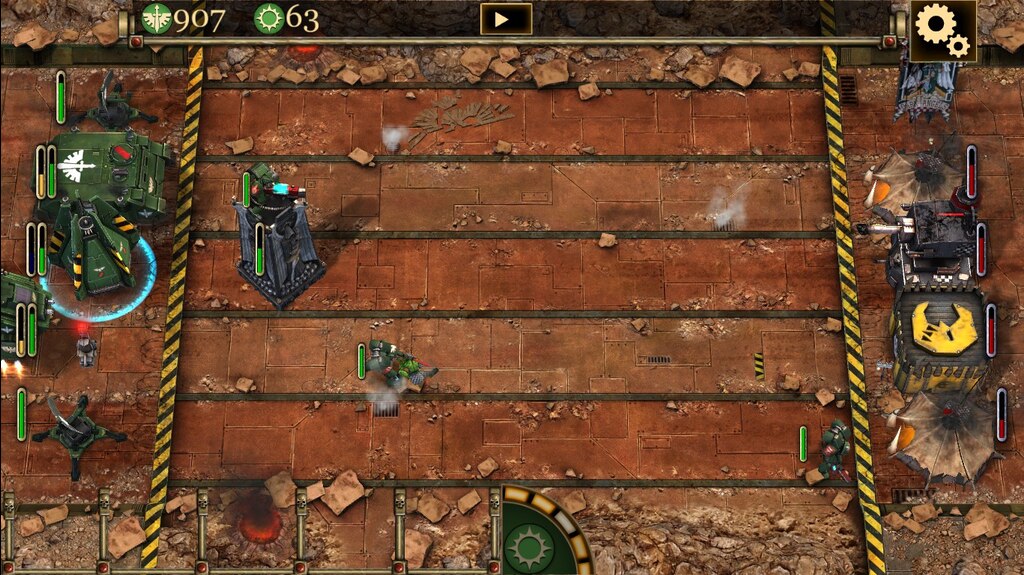
Storm of Vengeance is a lane defense game, sort of like Plants vs. Zombies only instead of spending sunshine to grow plants you're spending redemption points to make Dark Angels pop out of their drop pods. Actually, what it's more like is Ninja Cats vs Samurai Dogs, an earlier game from Eutechnyx. Storm of Vengeance is the same game, only with a progression tree so you can unlock frag grenades, a multiplayer mode, and 3D models of orks and space marines where the ninja cats and samurai dogs used to be.
36. Dawn of War 3 (2017)
Relic/Sega
Steam
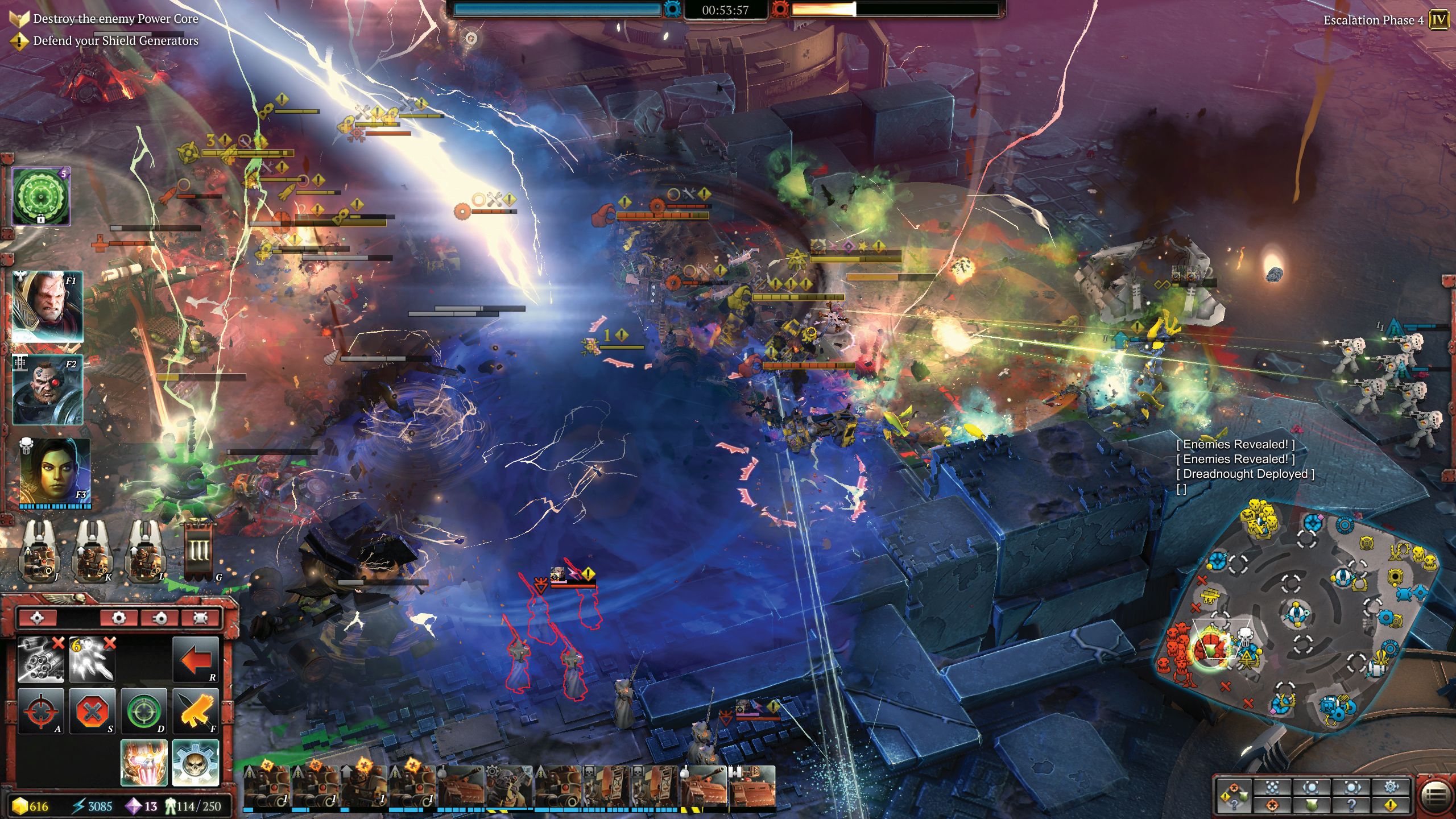
If you like the kind of RTS where you manufacture a huge amount of troops then drag them together in a glorious blob, the first Dawn of War is for you. If you prefer a handful of units and heroes with their own special abilities to carefully manage, that is Dawn of War 2's whole deal. Dawn of War 3 tries to split the difference, and it's an awkward compromise. Elites all have different things they can do and some of your units have an ability or two, but there are long stretches where it feels like you should be using them yet there's nothing for you to do.
In the story campaign you alternate between marines, orks, and eldar one mission at a time, never playing any one group for long enough to get comfortable with them—almost every level feeling like a reintroduction of abilities and tech it expects you to have forgotten, as if the tutorial never ends. While the first two games are divisive and there are plenty of passionate defenders of each, Dawn of War 3 didn't end up appealing to anyone.
35. Fire Warrior (2003)
Kuju/Chilled Mouse
GOG
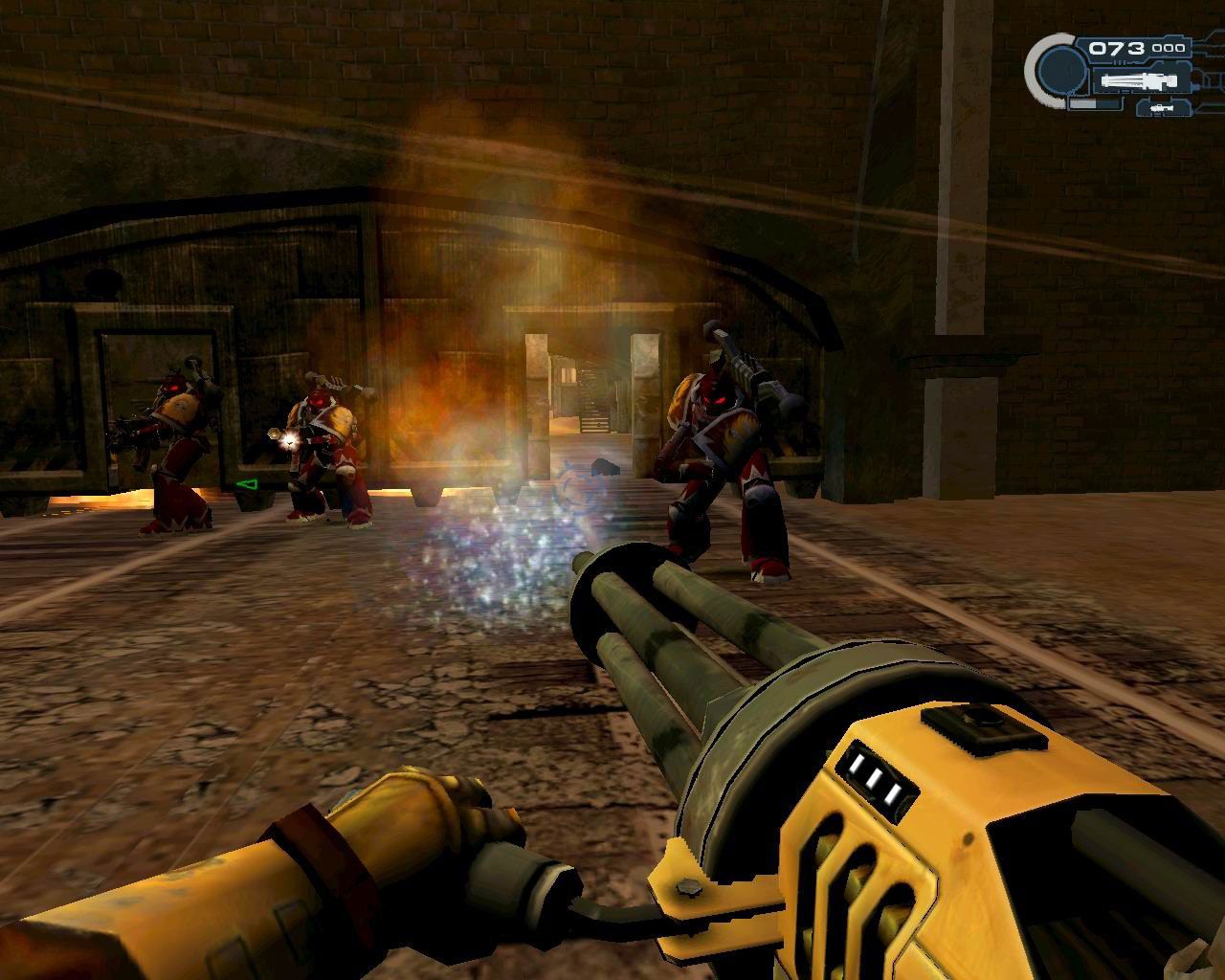
There are surprisingly few 40K first-person shooters, and not many games where you get to be the T'au, the mech-loving weebs of the setting. Fire Warrior isn't about mechs, however. It's a corridor shooter ported over from the PlayStation 2, a fine console that didn't have a single decent FPS to its name. (Red Faction fans, you're kidding yourselves.)
You'll have to turn auto-aim on to fix the busted mouse controls in Fire Warrior, but nothing will fix the boring guns or unreactive enemies. Two things elevate it, however. One is that the first time you have to fight a space marine he seems borderline unstoppable in a way that feels right, and the second is that Tom Baker recorded some glorious narration for the intro.
34. Eisenhorn: Xenos (2016)
Pixel Hero Games
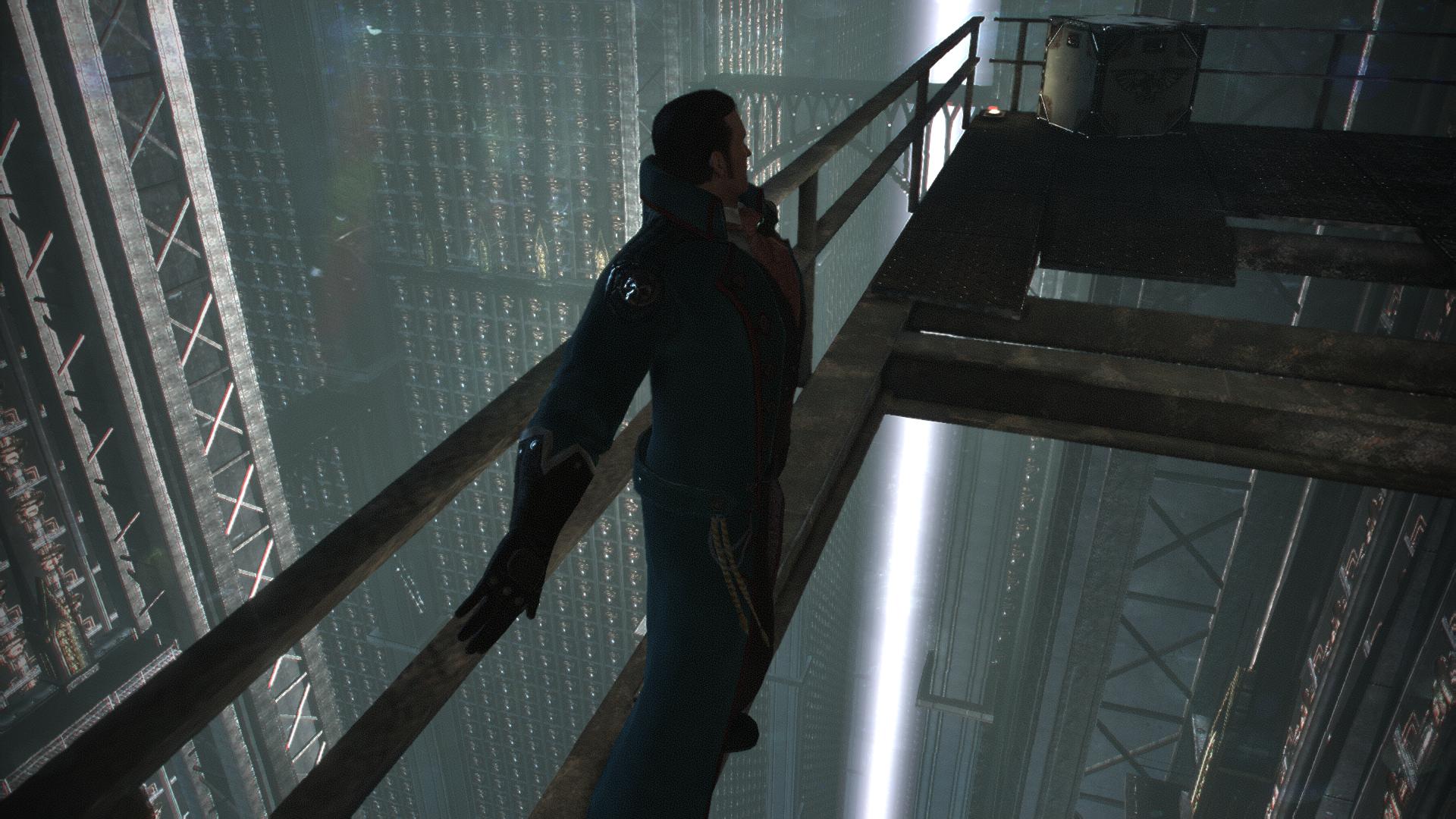
The Eisenhorn novels are some of the better 40K books, hard-boiled Raymond Chandler detective stories about an inquisitor who finds himself making trade-offs with his principles while he hunts heretics and slowly comes to grips with the Inquisition's corruption. This adaptation of the first book did one thing right by casting Mark Strong as Eisenhorn. He's perfect, but the voice direction is weak and every cutscene is full of characters at wildly different levels of intensity.
Between the story bits is a mish-mash of third-person combat, collectible hunts, hacking minigames, that thing where you spin clues around to examine them—a bundle of features lifted from other games and artlessly glued together to fill the gaps. It feels like the kind of budget movie tie-in game that used to be commonplace, only this time it's a book tie-in.
33. The Horus Heresy: Betrayal at Calth (2020)
Steel Wool Studios
Steam
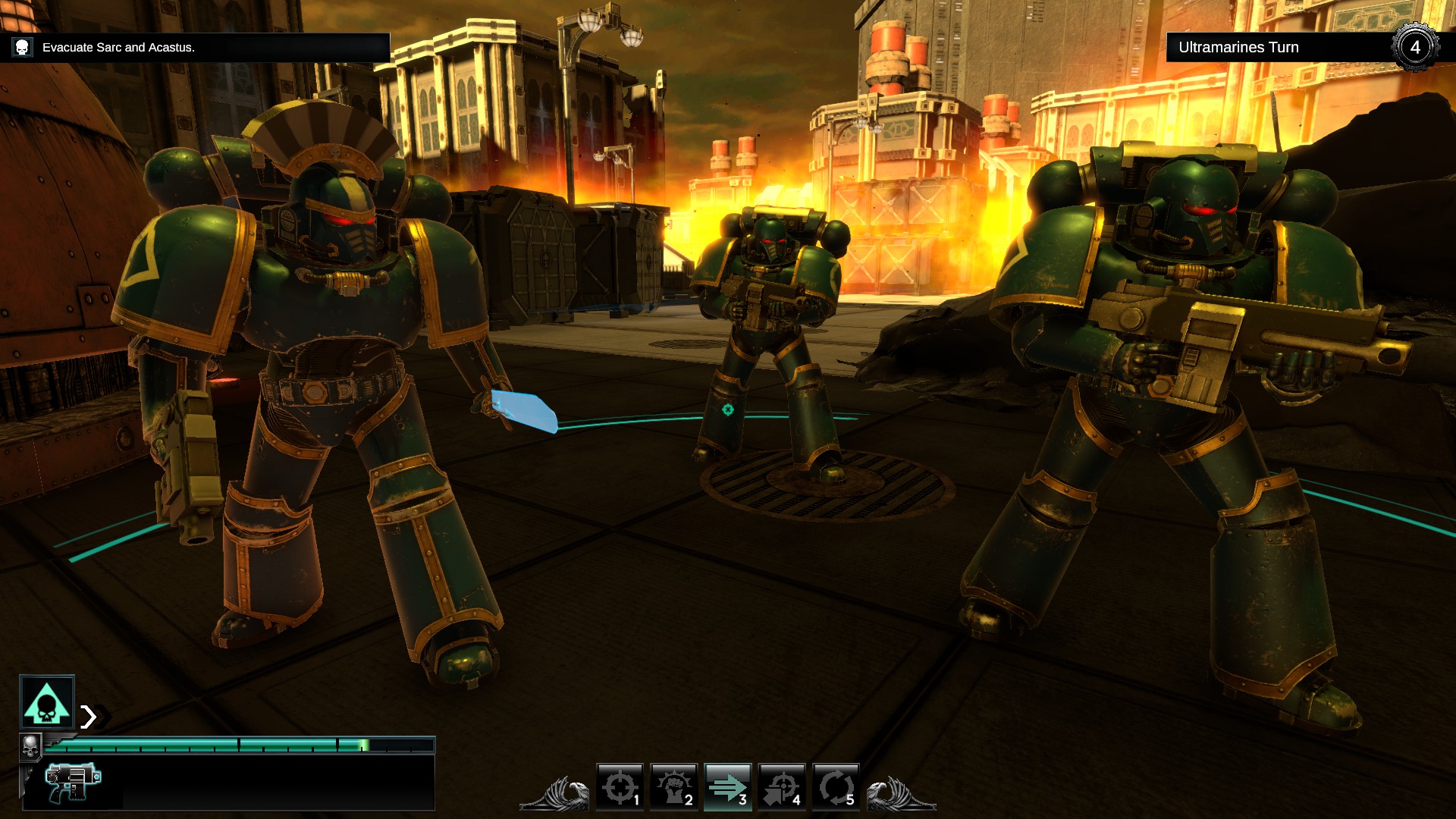
There are plenty of turn-based 40K games about squads of space marines jogging from hex to hex, but what makes Betrayal at Calth different is its viewpoint. You command from the perspective of a servo-skull, a camera that swoops around the battlefield and lets you appreciate the architecture of the Horus Heresy-era up close. You can even play in VR.
It's a cool idea. Unfortunately, you can feel where the money ran out. A limited number of unit barks repeat (often from a different direction to the acting unit), some weapons have animations while others don't, and the mission objectives occasionally leave out details you need to know. It started in Early Access and clearly didn't make enough money to keep it there until it was done. It's out now with a version number on it, but it doesn't feel finished.
💀 32. Warhammer Combat Cards (2021)
Well Played Games/The Phoenix Lighthouse
Steam | Microsoft Store
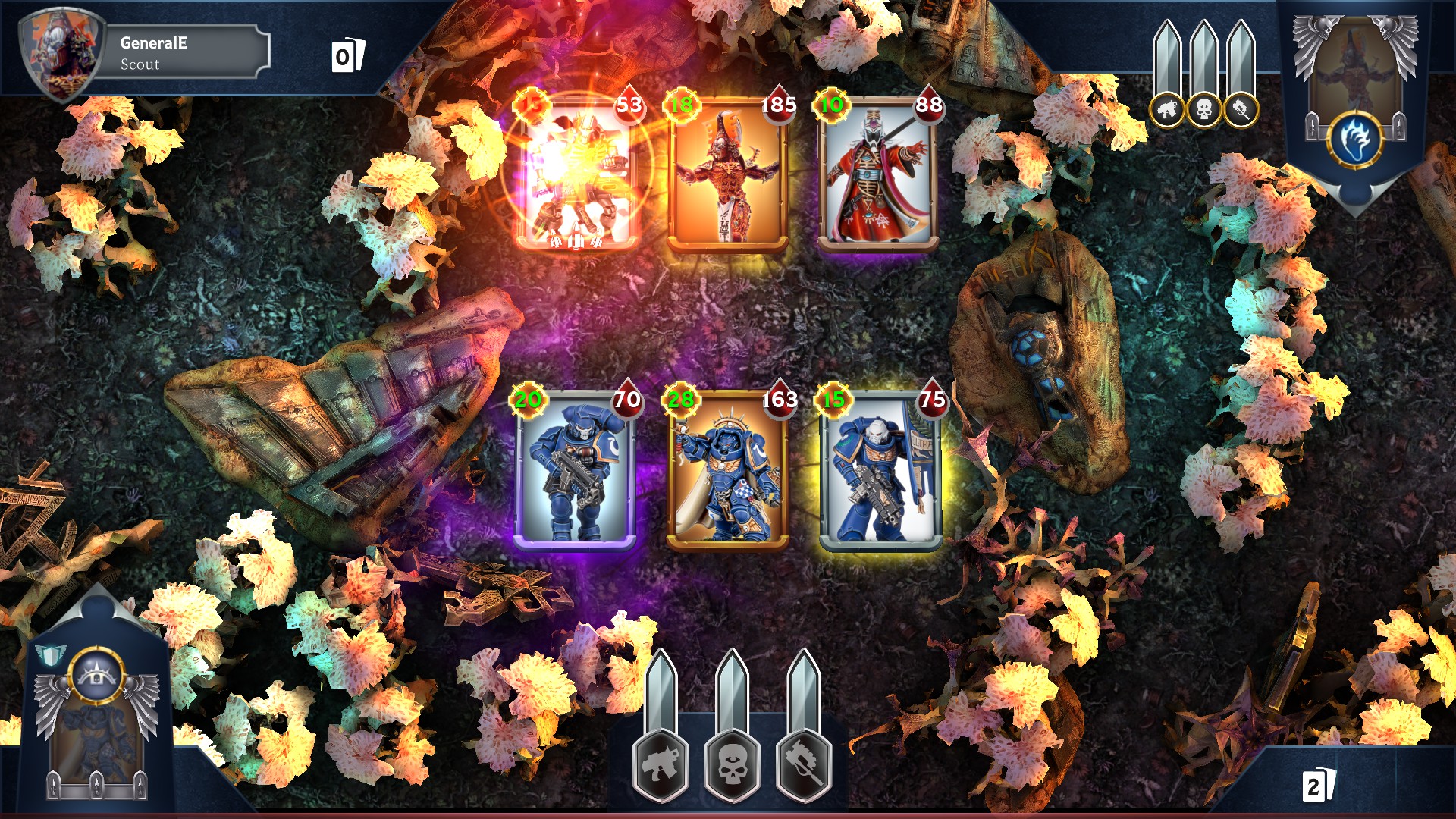
In 1998 Games Workshop released collectible cards with photos of Warhammer miniatures that had stats so you could play a rudimentary Top Trumps kind of game with them. It went through several iterations, and the 2017 version became a free-to-play videogame with painted 40K miniatures on the cards.
Don't expect Magic: The Gathering. You build a deck of one warlord and a bundle of bodyguards, keeping three of them in play, replacing bodyguards as they die. Each turn you choose whether to make a ranged, melee, or psychic attack and the relevant numbers get added up and damage exchanged. Tactical choice comes via buffs to the attacks you don't choose (which can pay off in later turns), and deciding when to play your warlord (a powerful card whose death means you lose).
Oddly, the only PvP is within your clan and mostly you play against AI that uses other players' decks. Not that Warhammer Combat Cards tells you this, or much of anything else. Good luck trying to join a clan even after you've leveled-up the appropriate amount, thanks to a designed-for-mobile interface.
31. Inquisitor—Martyr (2018)
NeocoreGames
Steam | Microsoft Store
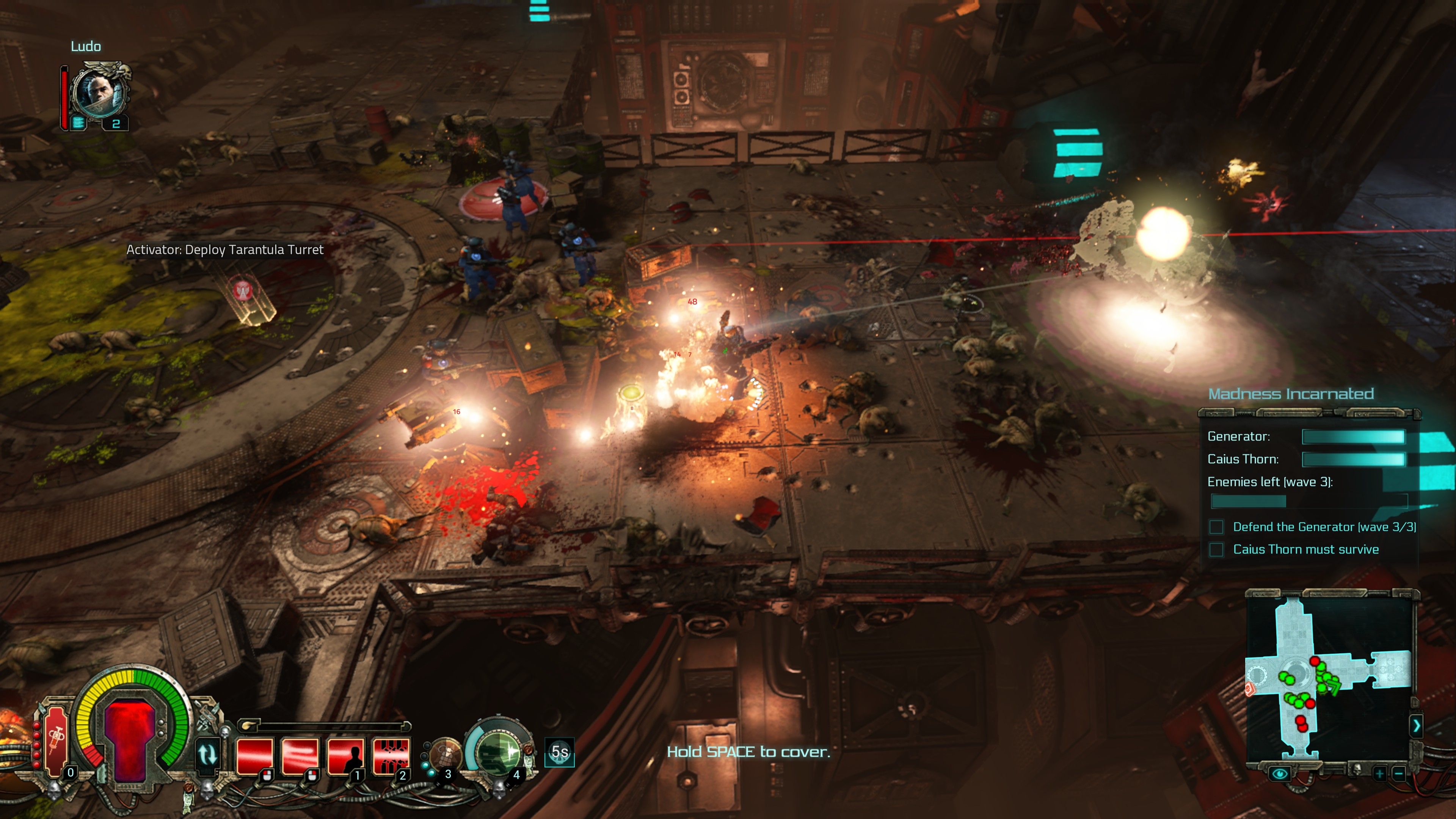
Inquisitor—Martyr is pulling in three directions at once. It's a game about being an Inquisitor, investigating the mysteries of the Caligari Sector, chief among them a ghost ship called the Martyr. It's also an action-RPG, which means if it goes for more than five minutes without a fight something's wrong, and among the most important qualities your heretic-hunting space detective genius possesses are their bonus to crit damage and the quality of their loot. Finally, it's a live-service game with shifting seasonal content, global events, limited-duration vendors, daily quests, heroic deeds, no offline mode, and the expectation you'll replay samey missions for hundreds of hours every time there's a content update.
The action-RPG part is OK, Diablo with guns, but it doesn't mesh with the rest. Why would an Inquisitor spend so much time crafting new gear? Why do I need to collect a different color of shards every time there's a new "Void Crusade"? Every game wants me to collect shards of something and I'm just so tired.
30. Adeptus Titanicus: Dominus (2021)
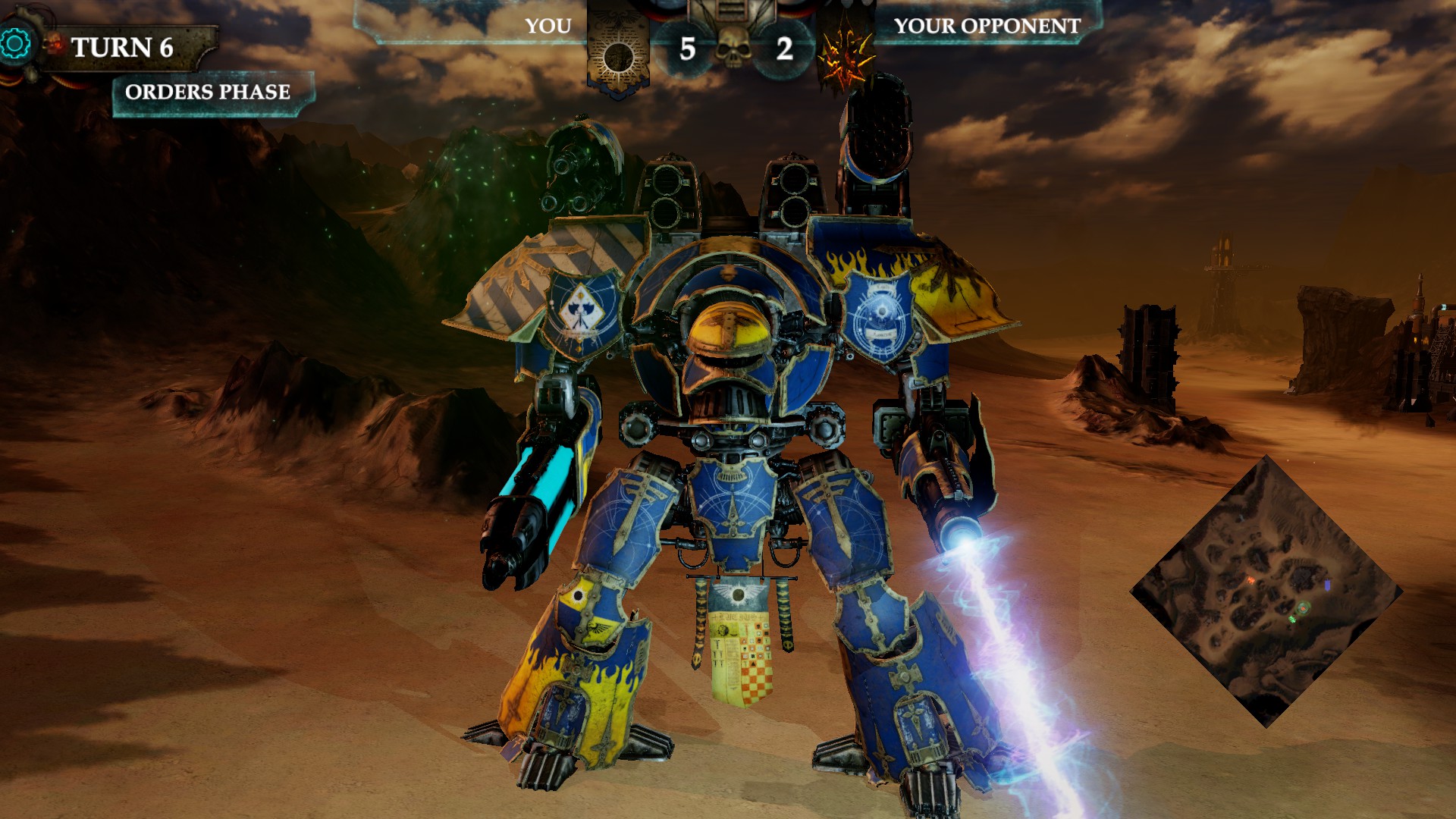
Scale is important in a setting where billions die and nobody blinks. Mechs can't just be mechs in 40K. They're titans, god-machines up to 100-feet tall that stomp through fancy gothic megacathedrals without slowing down.
Dominus pits maniples of titans belonging to the Imperium and Chaos against each other in turn-based combat. You order a titan to move and a hologram appears at its end position; you choose who it's going to target and color-coded projections show which weapons will be in range. You commit and the titan spends 10 seconds stomping to its endpoint, firing continuously the entire time—just spaffing out barrages of missiles and lasers while walking through buildings.
You get a lot of odd-looking turns where most of the shooting is at impenetrable rocks that happen to be between titans, which isn't helped by the AI's tendency to shoot when it has no chance of hitting, or the cinematic camera's tendency to clip inside mountains. Another oddity: you don't plot out moves but simply pick where to finish. Sometimes you'll select a position within the movement radius and the hologram will instead appear on the opposite side of where you started because apparently you need to go the long way round and don't have enough movement after all.
Some missions give you a fresh maniple, but partway through the campaign suddenly half the missions have to be completed with the titans that survived the previous one, a fact Dominus doesn't bother to tell you.
29. Chaos Gate (1998)
Random Games/SSI
GOG
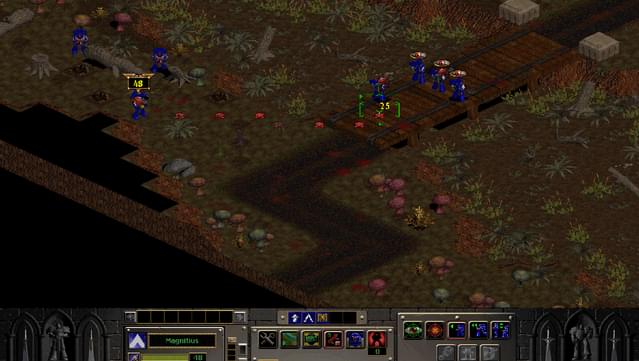
A squad tactics game reminiscent of Jagged Alliance or X-COM, but with less of a strategy layer. If the specific flavor of original X-COM is more to your liking than modern, hyphen-less XCOM then Chaos Gate may be your thing, but it does lack enemy variety. You're up against the forces of Chaos, which means Chaos Cultists, Traitor Marines, and half-a-dozen varieties of daemon. Meanwhile you're in charge of the Ultramarines, and while you can rename your troops and assign a limited number of heavy weapons per squad, after a while every battle feels the same. They drag on too, thanks to the Traitor Marines who litter most maps being able to survive multiple krak grenades and heavy bolter rounds.
28. Sanctus Reach (2017)
Straylight Entertainment/Slitherine
Steam | GOG
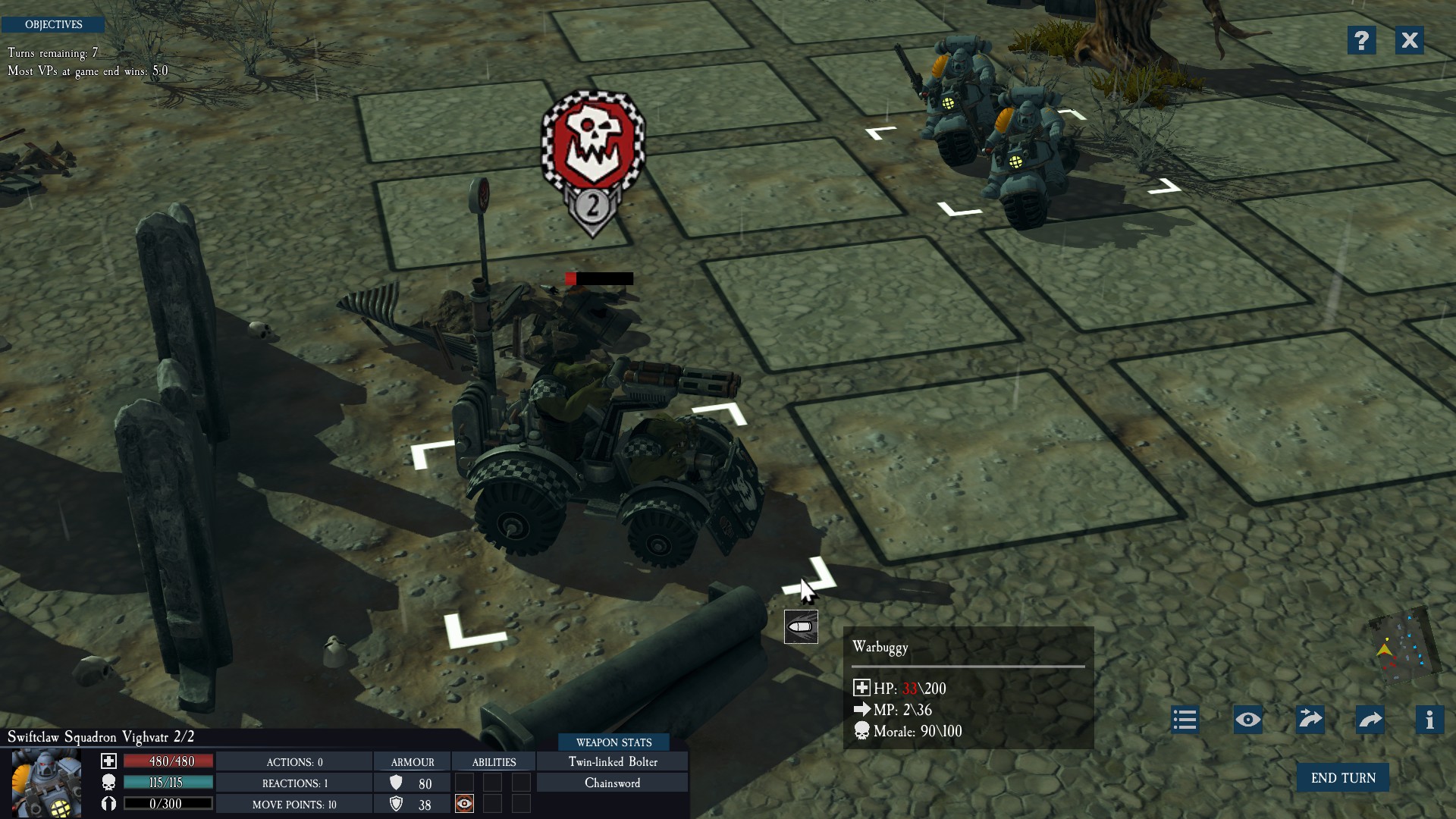
The classic hex-and-counter wargame Panzer General has inspired a lot of 40K games, and Sanctus Reach, which pits Space Wolves against orks, is certainly one of them. It's not bad, but it is basic. The objectives are often just capturing or defending victory points and only after three levels of those will you get something different like an escort mission or something, the story's a paragraph of text between maps, there's no strategy layer, and everything on the presentation side, from unit types to animation to level furniture, feels like the absolute minimum, where 40K should be all about maximalism. Other games do this identical thing better.
27. Gladius—Relics of War (2018)
Proxy Studios/Slitherine
Steam | GOG | Epic
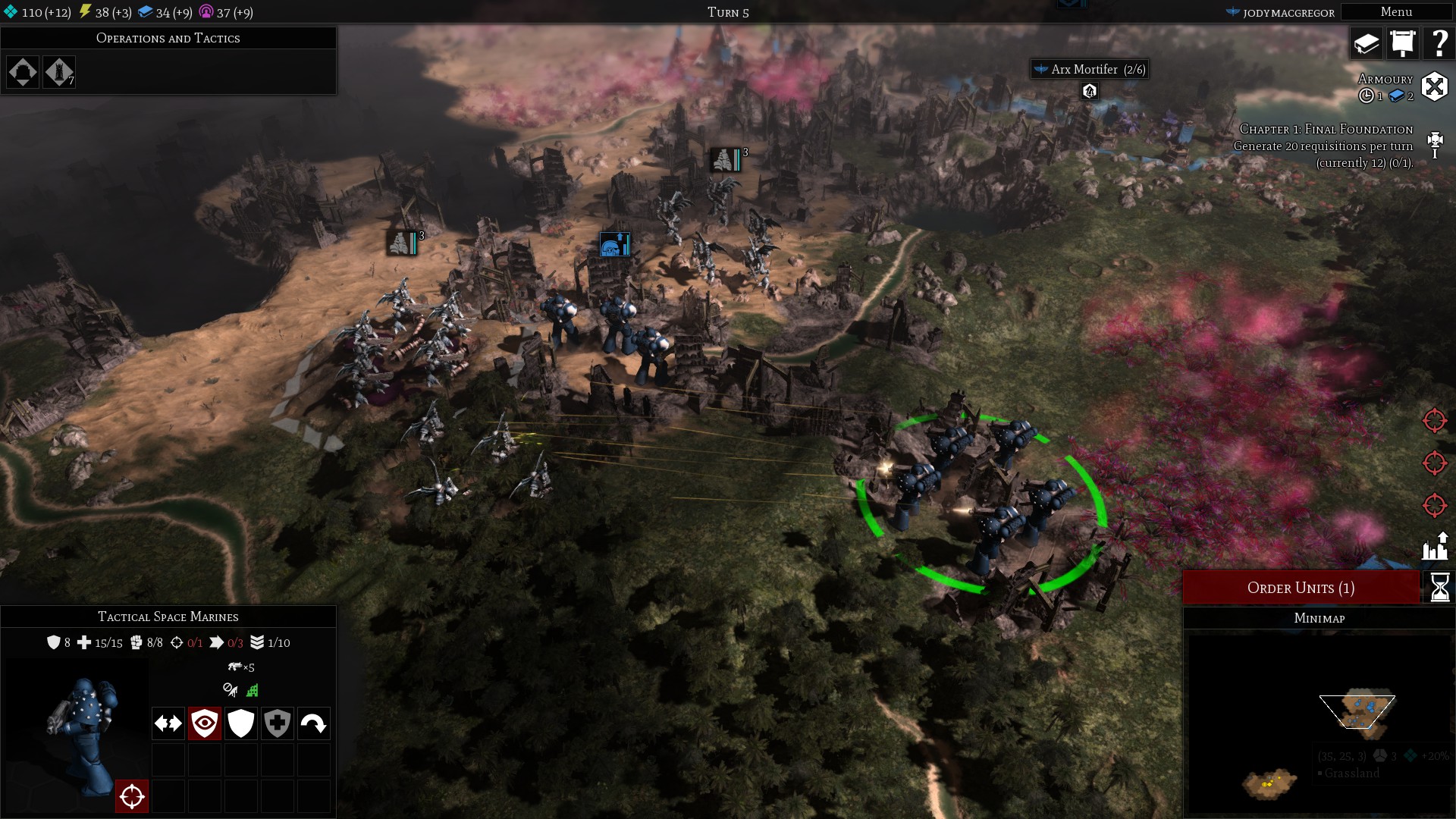
Take Civilization 5 (or maybe Warlock: The Exiled, or Age of Wonders), then remove the diplomacy so it's all about war. Add some inspiration from RTS base-building, with separate barracks for infantry and vehicles around your city, then add heroes who level up and gain some quite Warcraft 3 abilities on top of that. Gladius is an intriguing strategy game Frankenstein, but it's got issues.
On enemy turns it'll show a random battle happening to an ally rather than your own troops being slaughtered. There's a storyline scattered about in quests, but to get anywhere with them you have to play an artificially long game or you'll defeat all the enemies and win by conquest before uncovering any of the tantalizing secrets it hints at. Finally, even with wildlife turned down to Very Low, the early turns of every game are spent fighting alien dogs and bugs and floating mind-control jellyfish for way too long before actually going to war with the other factions.
26. Space Hulk: Deathwing (2016)
Streum On Studio/Focus Home Interactive
Steam | GOG | Microsoft Store
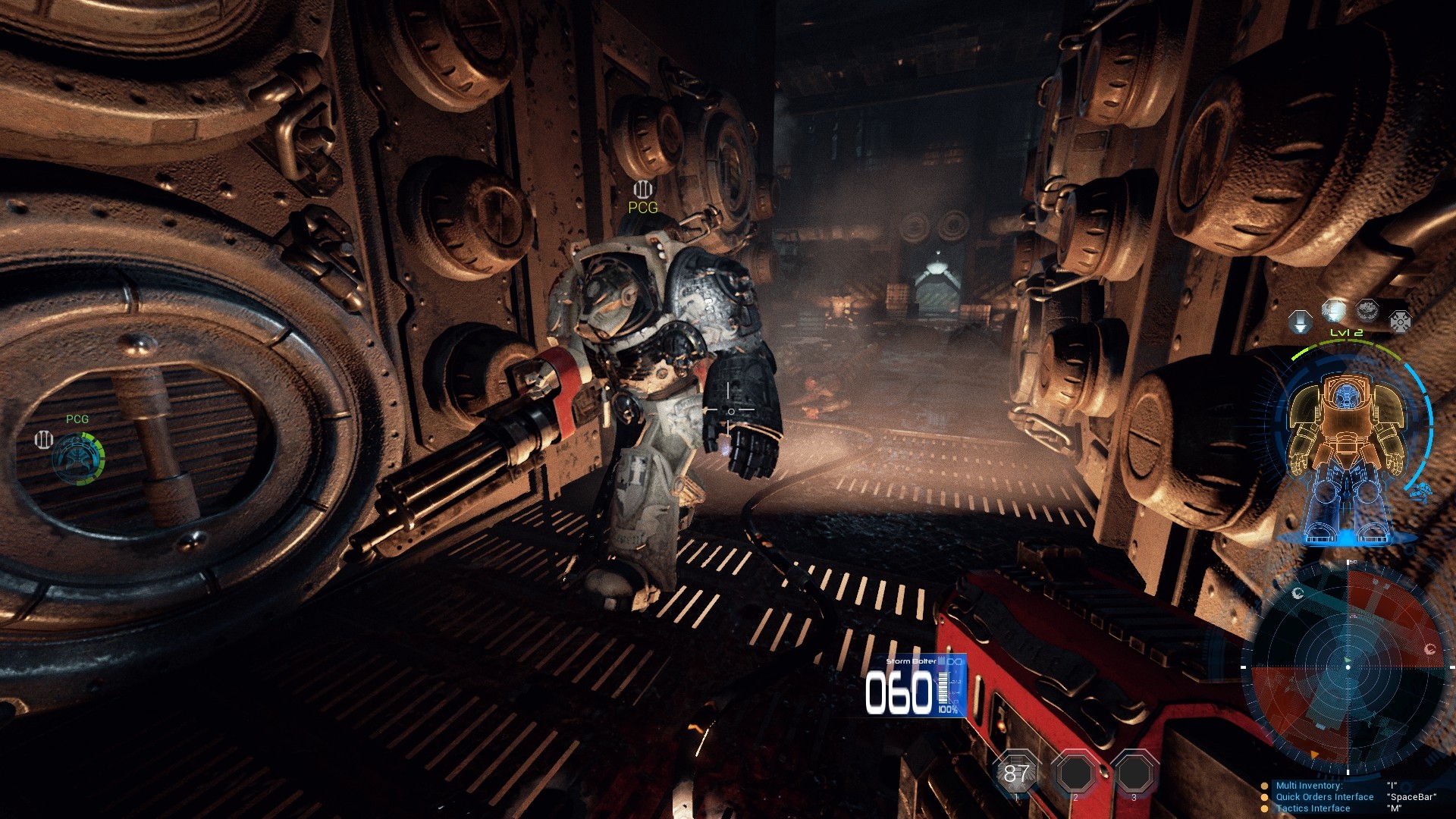
A multiplayer co-op FPS, Deathwing is Left 4 Dead with genestealers. Although it launched in a terribly buggy and unoptimized state, an enhanced edition rerelease fixed some of its worst problems. Now it's a competent claustrophobic multiplayer game where you can dress up your terminators real fancy. As a singleplayer experience it's let down by daft AI, and even with friends you'll have to overlook whiffy melee weapons and shooting that feels more like you're turning on a hose than opening up with a mark-two storm bolter.
25. Space Crusade (1992)
Gremlin Interactive
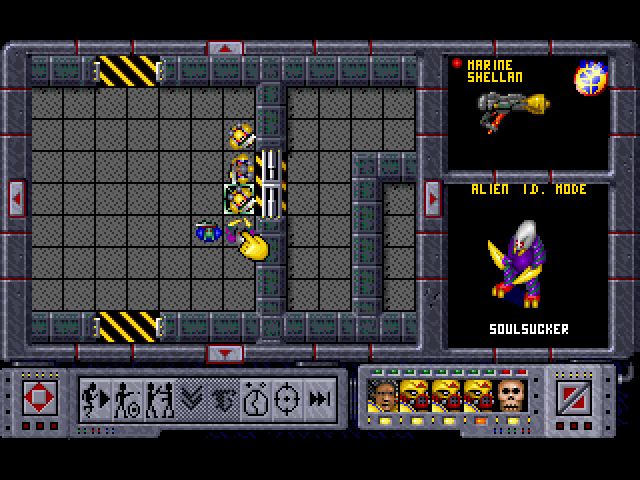
Milton Bradley's follow-up to HeroQuest was a version of Warhammer 40,000 for ages 10 to adult, and Gremlin Interactive were once again responsible for the videogame. Like the adaptation of HeroQuest, it's a pretty direct replication—although for some reason the genestealers have been replaced by different aliens called "soulsuckers."
It's quite slow-paced and you have to choose between music or cheerfully rinky-dink sound effects because it can't do both at once, and of course it's lacking the board game's slick miniatures and card art. Nostalgia's a powerful thing though, and I adore these goofy pixel space marines.
24. Space Hulk (2013)
Full Control
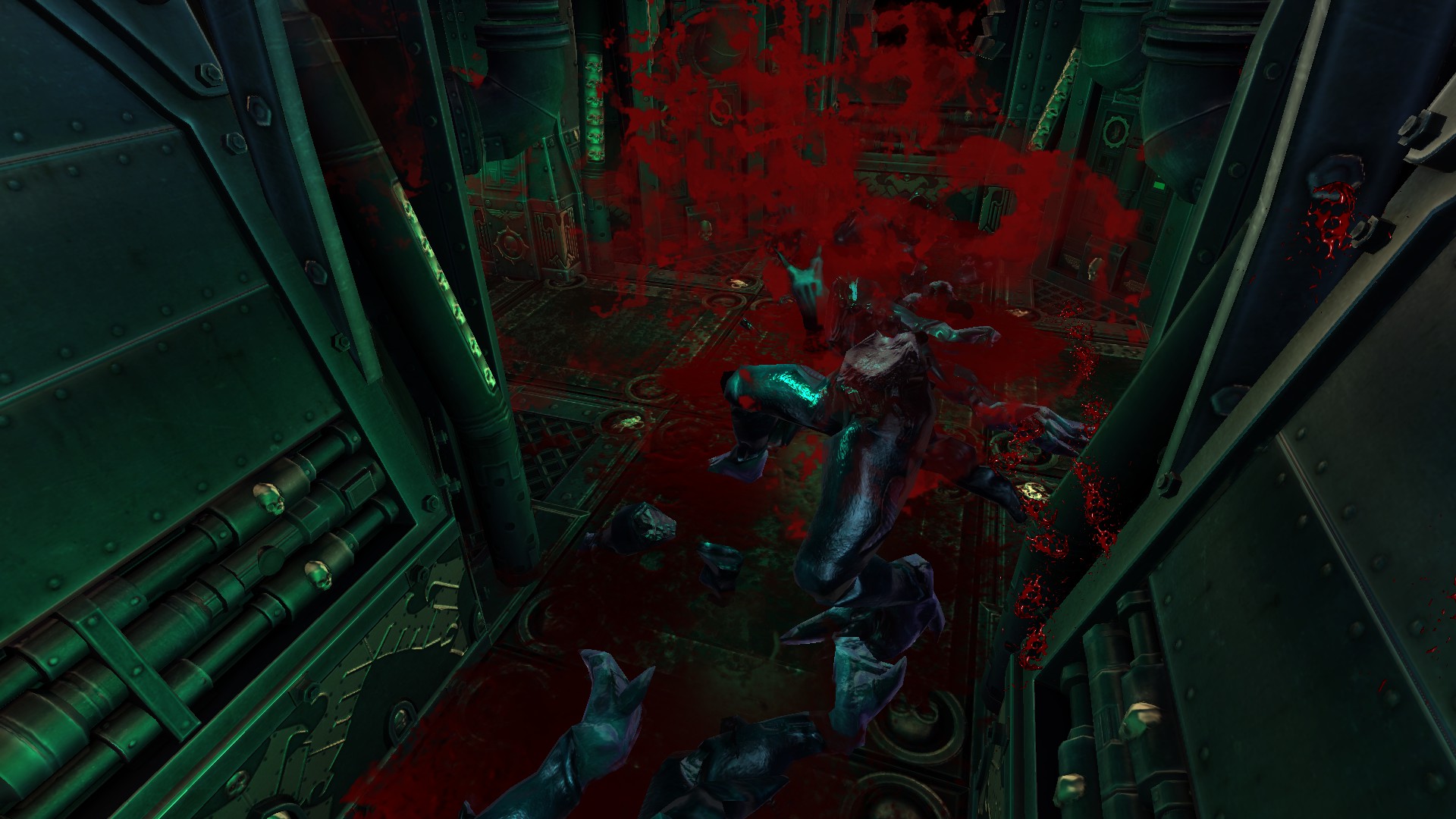
This was our first look into the grim darkness of a near future where there are only PC ports of 40K games made for tablets. Space Hulk comes with all the limitations you'd expect from a game designed to run on an iPad Mini. This fine if unambitious version of the board game plays the same limited animations over and over, whether it's sprays of blood that appear sort of around genestealers as they're shot, or three red lines appearing in mid-air to mark a terminator falling to their claws. The way genestealers suddenly transform into a pair of bleeding leg-stumps when hit by an assault cannon is unintentionally hilarious.
Thanks to some patched-in improvements, like the ability to speed up terminators so your turns don't take forever, this take on Space Hulk ended up OK if all you want is a version of the board game with a singleplayer mode where you're the space marines.
23. Space Hulk Ascension (2014)
Full Control
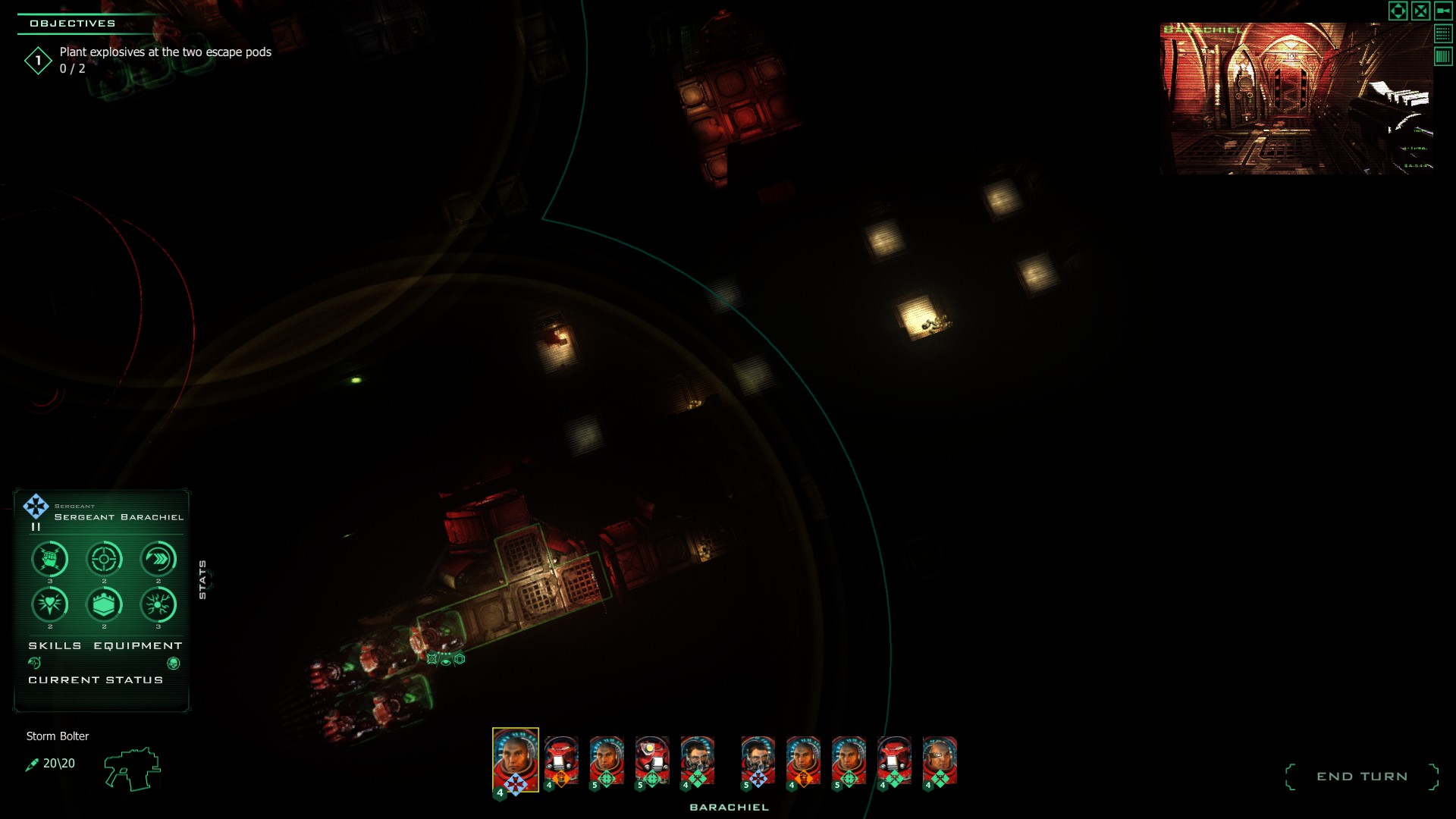
After the negative response to the PC version of their previous Space Hulk game, Full Control retooled it into Ascension, giving it a welcome visual upgrade and customizable marines. More divisively it plays less like a board game, with reduced randomness, an upgrade system based on experience points, and tweaks to the way weapons work. Storm bolters gain heat when fired and jam when it maxes out, and instead of just filling an entire room or corridor with fire, the flamethrower has multiple modes of spray. And to make it look less like a board game there's fog of war, rendering the map dark beyond a tiny zone of vision. Some of the changes are fussy and don't add much, but it's a slight improvement overall.
22. Dakka Squadron (2021)
Phosphor Game Studios
Steam | GOG
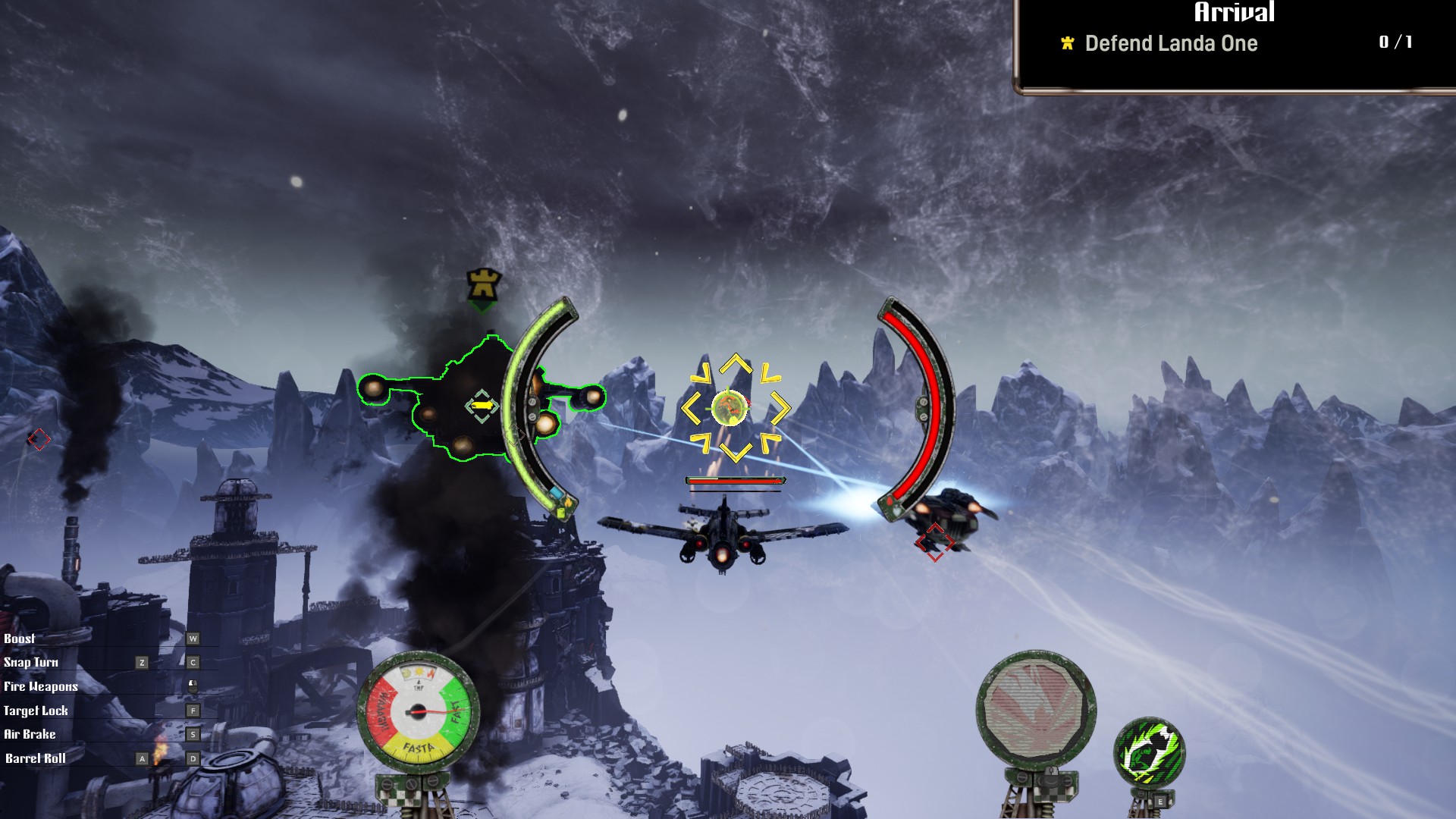
Not many 40K games let you play aliens, but Dakka Squadron isn't just a game that lets you be an ork, it's committed to the bit. This is arcade aerial combat if Star Fox was violently Cockney and everything was soundtracked by wailing deedly-deedly guitar and shouts of "Dakka dakka dakka!"
It's maybe a bit too orky. Multiplayer is orks versus orks, and so is most of the singleplayer, though eventually you get to shoot down some Adeptus Mechanicus craft that look like flying boxes full of lasers, a few of the necrons' tin death croissants, and so on. Mostly though it's endless orks in World War II fighter jets with nose-mounted spikes laughing as they krump each other.
Missions drag on, with wave after wave of enemies and the same combat barks as you shoot them down, but fortunately a three-lives system was patched in so you don't have to re-do an entire mission because you got krumped at the end. I did turn down the guitars, though.
21. The Horus Heresy: Legions (2019)
Everguild Ltd.
Steam
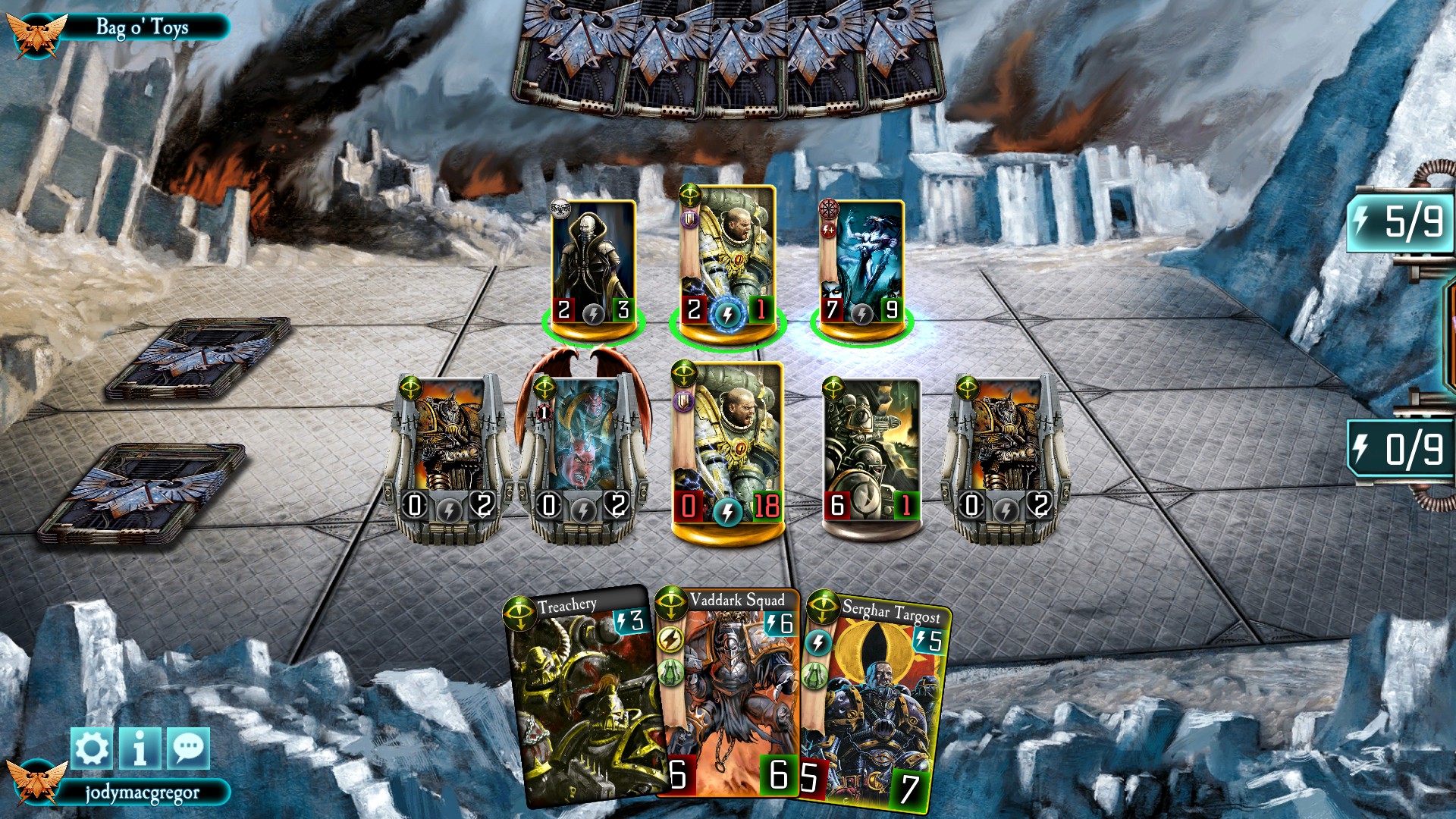
It's the Horus Heresy era again, only this time in the form of a free-to-play collectible card game. Though it plays a lot like them it's not as flashy as the big names in the genre, with the quality of the card art being all over the place. But if you've got the time or money it's a solid enough example of the form, and if you've read the books and the phrase "the Fall of Isstvan III" makes you feel like a 19th century French campaigner hearing the word "Waterloo," then there's a stirring singleplayer campaign that will let you experience that in card game form.
20. Freeblade (2017)
Pixel Toys
Microsoft Store
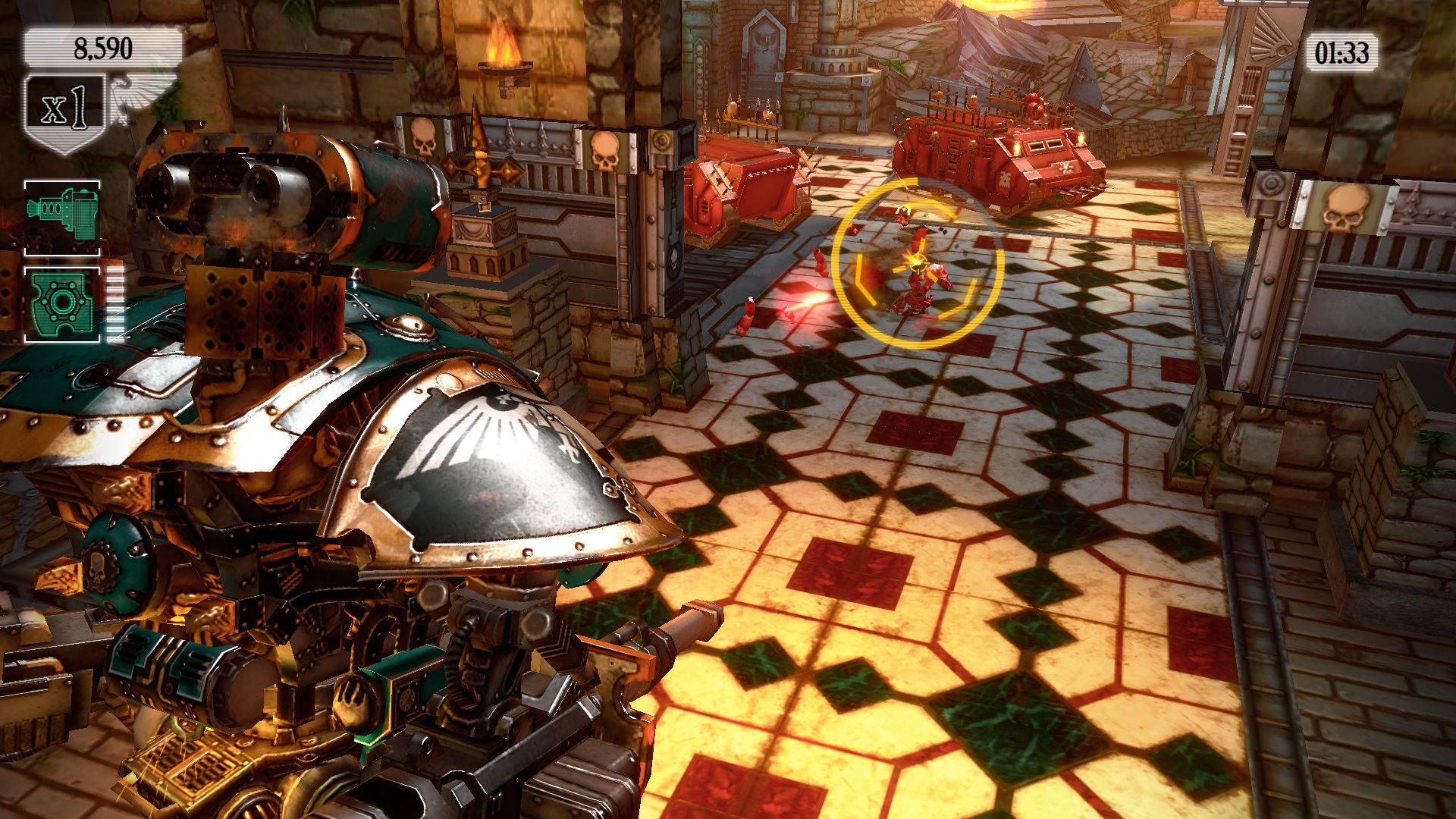
I went into this with low expectations. A free-to-play adaptation of a mobile game, complete with loot boxes and multiple currencies and all that jazz? But Freeblade scores points for letting you play an Imperial Knight, a mech that's bigger than a house, and letting you color and customize your walker like you're choosing paints and decals for a miniature. It's a simple rail shooter, basically a version of Time Crisis where you're the size of Godzilla, and better than I thought it would be.
19. Aeronautica Imperialis: Flight Command (2020)
Binary Planets/Green Man Gaming Publishing
Steam
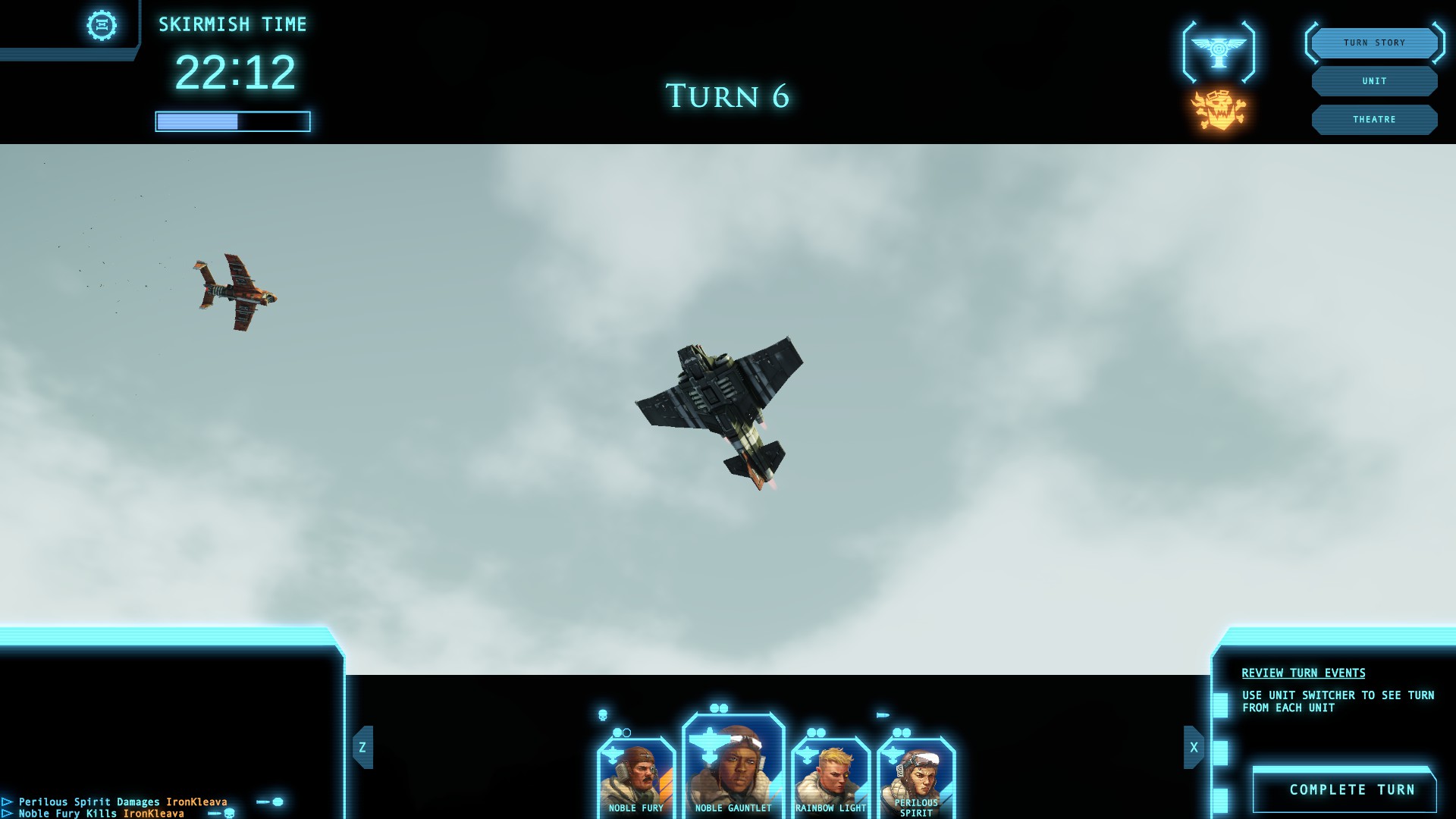
When your ace pilots in Aeronautica Imperialis: Flight Command kick the bucket, shot down by ork fighters in rustbucket planes made out of scrap in a cave, a commander slides onto the between-mission screen. "Your pilot numbers are depleted," she says, "You may call on reserves." There's no judgment in this because every randomly generated pilot is entirely disposable.
Flight Command is an aerial-combat simulator where you program your planes with maneuvers and then watch 10 seconds of dogfighting play out in real-time. It's somewhere between Sid Meier's Ace Combat and the simultaneous turns of Frozen Synapse. Those 10 seconds contain a bewildering amount of stuff, as one plane powerdives to avoid an attack from behind, another explodes, and one of your pilots pulls off a high-G turn then blacks out. Switching to theater mode, which lets you see all this at once rather than following each pilot in turn, makes it easier, though I could do with a simple way to scrub the timeline back and forth.
Planes can switch loadouts if you remove the default missiles, and pilots might gain skills if they shoot down enough enemies, but one fighter is much like another. Even top guns are replaceable in 40K.
18. Legacy of Dorn: Herald of Oblivion (2015)
Tin Man Games
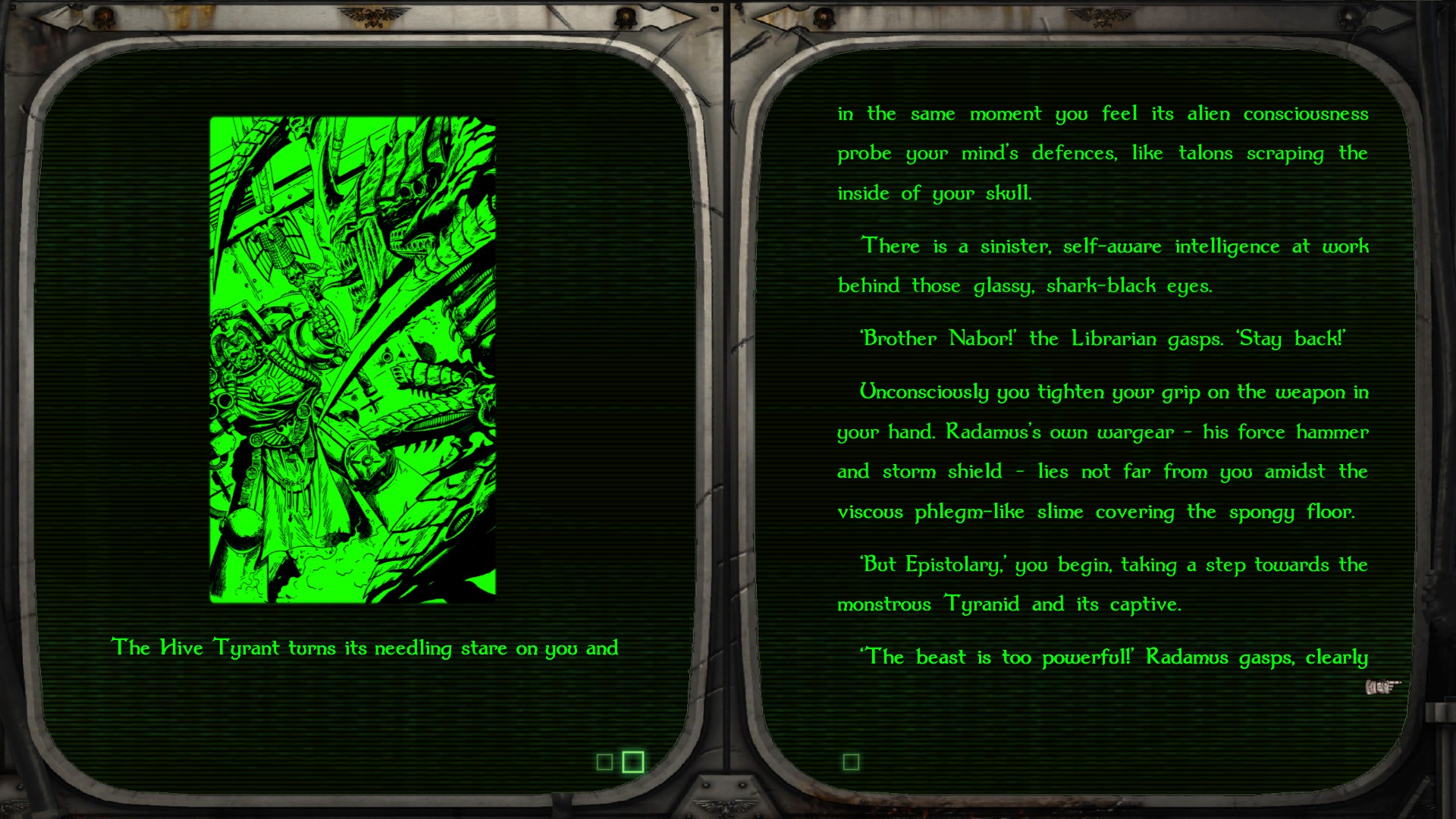
Games Workshop published several pick-a-path gamebooks under the Path to Victory label, and this one was turned into a visual novel. If you ever read the kind of Fighting Fantasy/Lone Wolf/choose-your-own-adventure books that declared, "YOU can be the hero," that's what this is, only YOU are a lone space marine cut off from his squad on a space hulk, striving to find your battle-brothers.
Legacy of Dorn really gets across the oddness of a ship made out of the fused remains of multiple wrecks, and as you explore each section feels distinct, whether fungal and orkoid or sanctified by the Sisters of Battle. The turn-based combat is nothing to write home about, but the difficulty options include the ability to skip the boring fights and cheat as if you're leaving your fingers in the pages, as is only right.
17. Regicide (2015)
Hammerfall
Steam
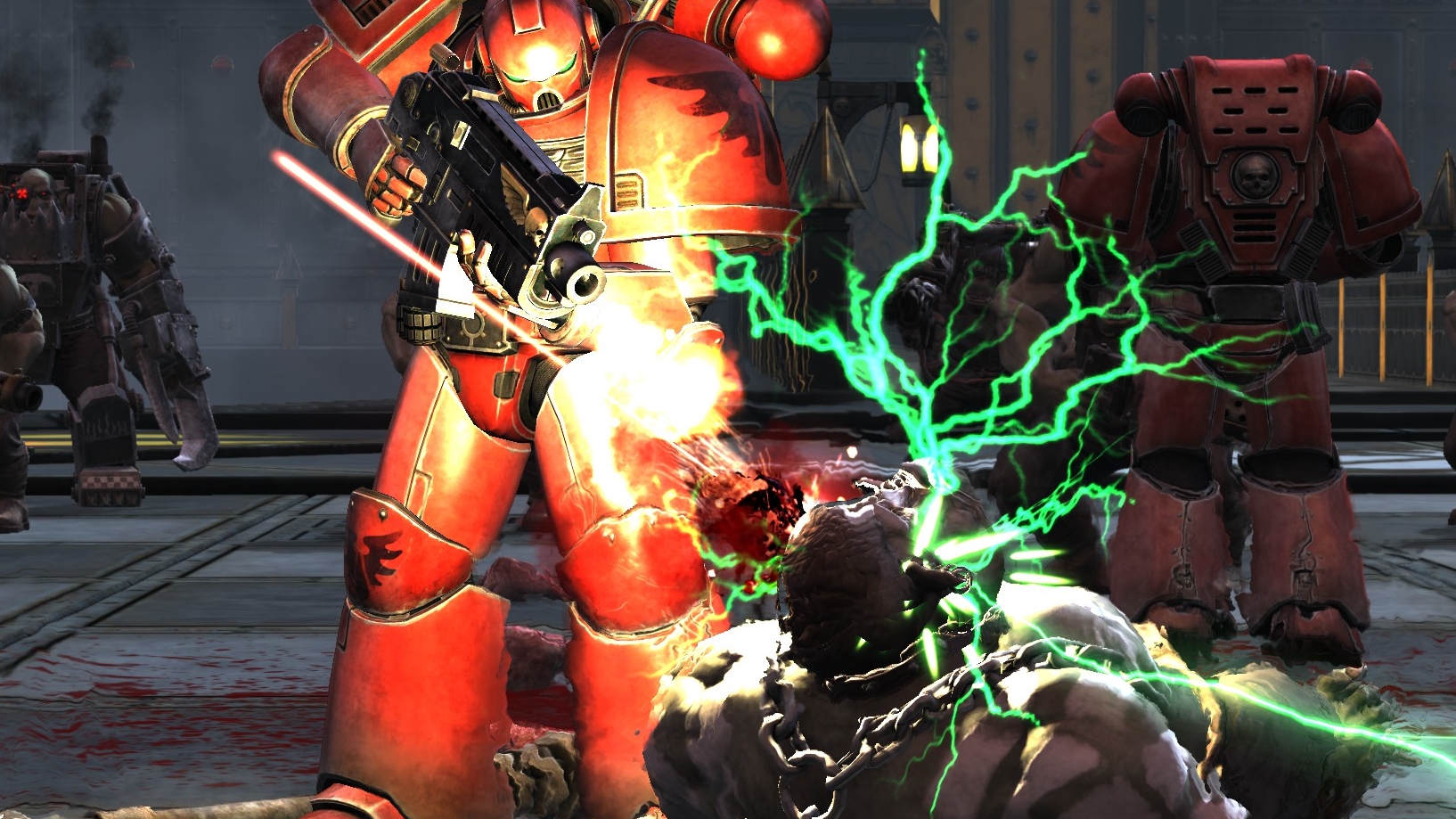
Take chess, but make it 40K. That's Regicide, which you can play in classic mode using the boring rules of real chess, or in Regicide mode, which adds an initiative phase after every turn where pawns shoot boltguns and queens launch psychic lightning. While taking a piece the usual way is an instakill, complete with gorey duels reminiscent of Battle Chess, attacks in the initiative phase chip away at the hit points of your target. At first it feels like regular chess, but focus fire and combine the right abilities and you'll soon remove a bishop from across the board. It feels like cheating in the best way, like you have outsmarted the centuries-old game of chess itself.
There's a story mode, but some of its puzzle matches can grind to annoying stalemate halts. Stick to skirmish play and Regicide does a better job with its ridiculous concept than you might think.
16. Eternal Crusade (2017)
Behaviour Interactive Inc.
Steam
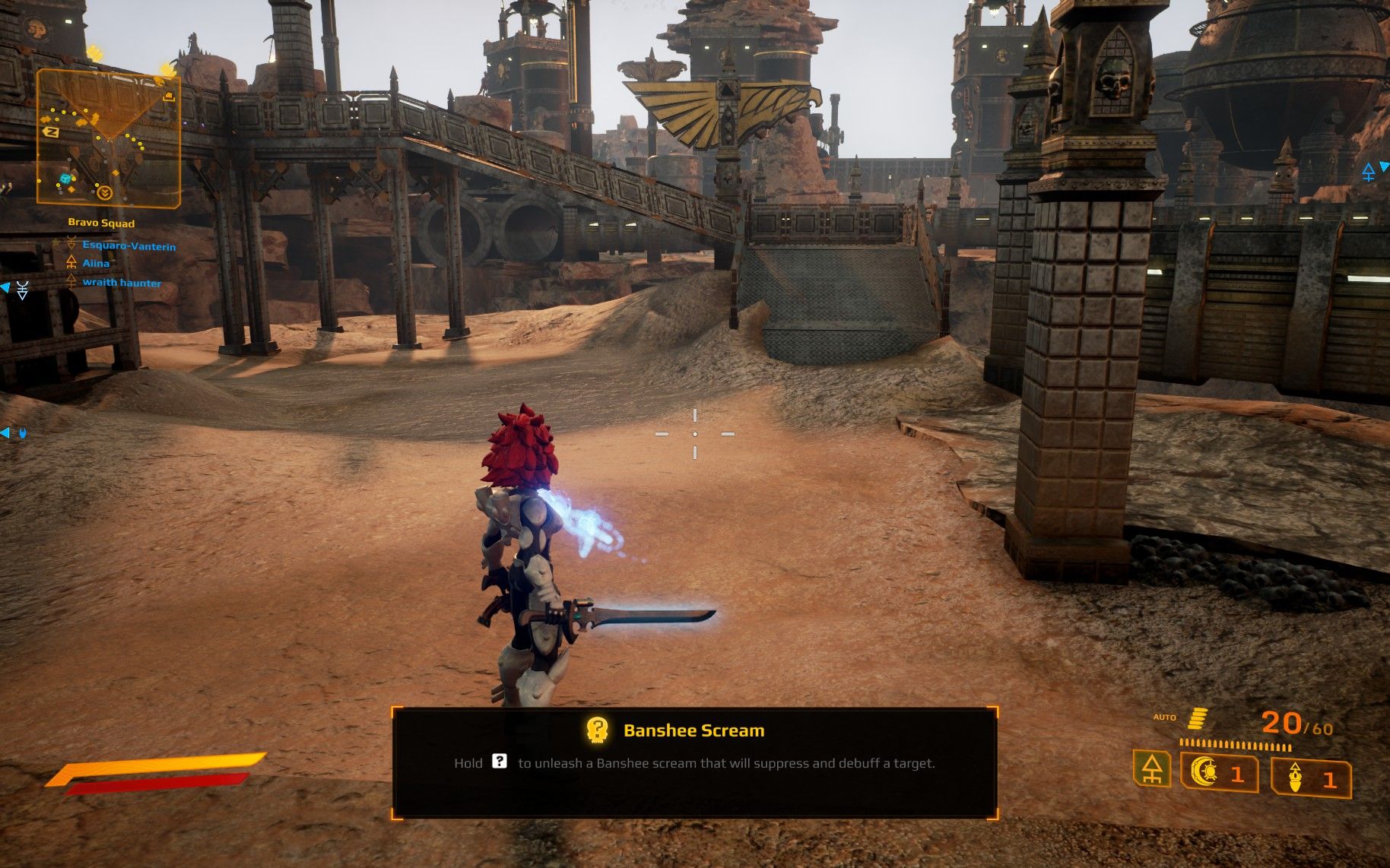
Initially billed as a Planetside-esque MMO with a persistent world for players to fight over, Eternal Crusade was scaled down in development. What eventually released was a lobby shooter that took the multiplayer combat from Relic's Space Marine and added vehicles, eldar and orks, as well as a co-operative PvE mode where four players take on tyranids.
Players who'd bought in early were disappointed at the reduction, but here's the thing: Relic's Space Marine was great, and so was its multiplayer. Building on that with missions where you might be defending a fortress while other players tried to smash through its gate in Predator tanks, or hovering over victory points as an eldar swooping hawk, made for some thrilling battles. Hardly anybody gave it a chance though, and even after being released for free it's still almost empty. If you can get together some people or luck into a match, Eternal Crusade is better than its reputation.
15. Deathwatch—Enhanced Edition (2015)
Rodeo Games
Steam

The Deathwatch are elite alien-busting marines who draw their recruits from other chapters, and this turn-based tactics game gives you command of a squad of them. You can have a Space Wolf and a Blood Angel and an Ultramarine, all hunting tyranids side by side.
Deathwatch is another game originally made for tablet, which you can tell by the way you get new wargear and marines out of random packs with lootbox sparkle, though they're earned through play rather than microtransactions. This Enhanced Edition for PC remastered the original's graphics and gave it a mouse-and-keyboard UI, though it could do with tooltips for the many buff icons each marine ends up with. If you want a budget version of a Firaxis-style XCOM but with space marines, it's a decent option.
14. Necromunda: Underhive Wars (2020)
Rogue Factor/Focus Home Interactive
Steam | Microsoft Store
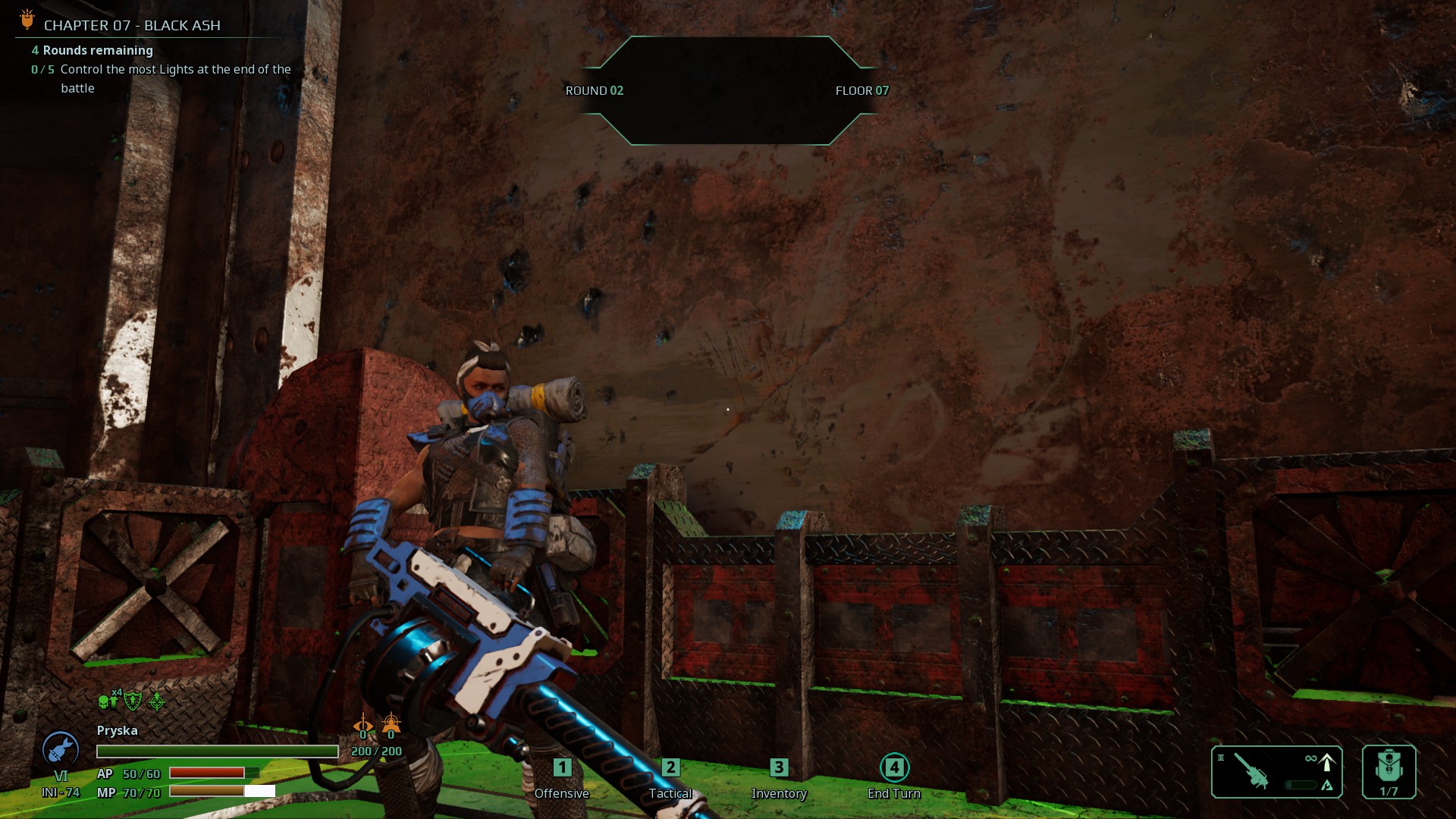
Hive cities cram billions of people into illustrations of the class system someone drew winged skulls on. At the bottom of the hive, gangs who work for mid-level Houses fight over scavenger rights and who has the coolest mohawk.
Underhive Wars is another turn-based tactics game that isn't content to copy XCOM and instead has to go and mess with it. Every map's covered in ziplines and elevators, and gangers have enough movement to whip up and down them. Seen in over-the-shoulder third-person, the AI's moves are often baffling. Gangers run past enemies they could attack, deploy buffs for opaque reasons, pick up mission objectives then end their turn exposed, sometimes just jog on the spot for a bit.
And yet, if you ditch the story campaign after the intro missions and get stuck into the procedurally generated Operations mode, there's a fun game here. Though each gang has access to the same classes, gear, and only slightly different skills, over the course of an endless war of territorial pissing they feel like your own. Customization makes your leather-fetish wrestlers or leopard-print amazons look rad as hell, and successive injuries, bionic implants, and limb replacements turn them into individuals with stories.
13. The Horus Heresy: Battle of Tallarn (2017)
HexWar Games
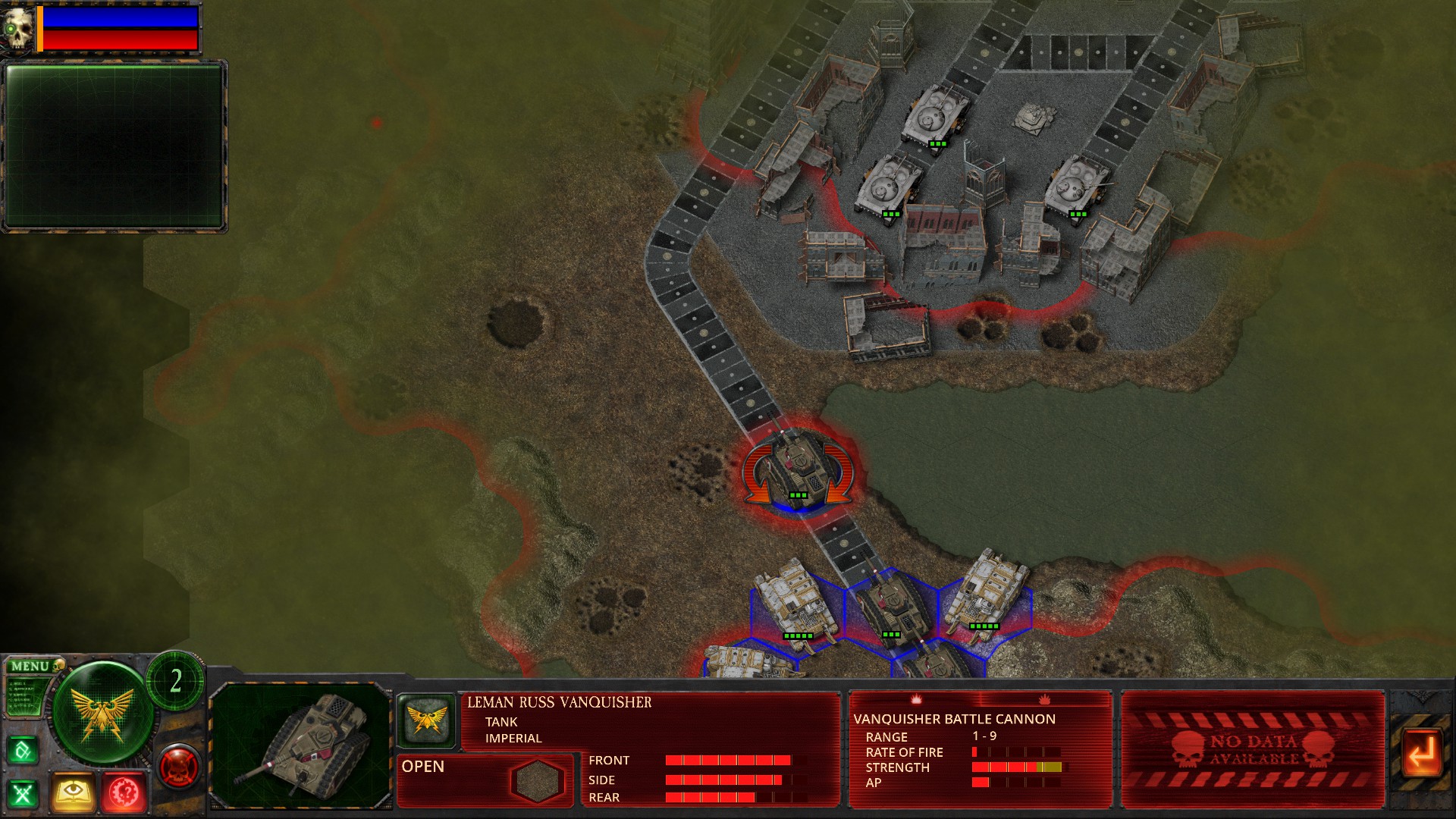
HexWar Games has its own take on the Panzer General series called Tank Battle, with multiple iterations like Tank Battle: 1944 and Tank Battle: 1945. Battle of Tallarn reskins the WWII game to be about the largest tank confrontation of the Horus Heresy era. It's essentially Tank Battle: 30,000.
It's a particularly rock-paper-scissors wargame, with tanks, infantry, fliers, walkers and titans as counters to each other in specific situations, and terrain that's either damaging, hard-stopping, crossable only by fiers, or cover but only for infantry. Like all the Horus Heresy games and books it demands a dedication to the fictional history of Warhammer 40,000 as passionate as any WWII nut to get the most out of it, but if that's you then you probably already know Battle of Tallarn and are humming the theme tune right now.
12. Armageddon (2014)
Flashback Games/The Lordz Games Studio/Slitherine
Steam | GOG
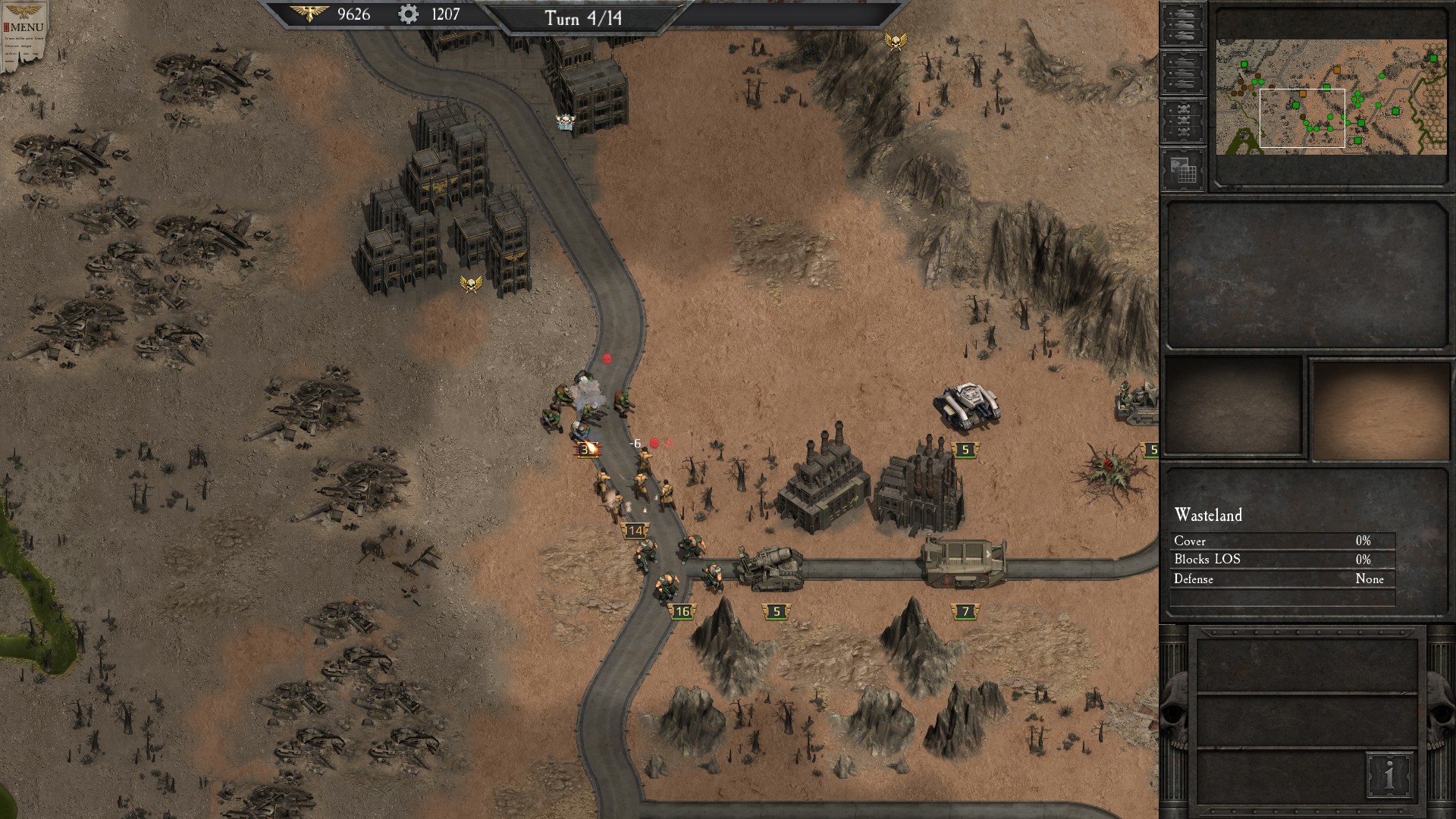
Another take on the Panzer General turn-based hexgrid wargame, Armageddon is set on a hive world so polluted it's all fire wastes, lava canyons, and acid rivers, which the armies of the Imperium have to defend from hordes of orks. Each scenario is a puzzle where you'll have to decide whether to split your battlegroups or unite them in a single wedge, lock down the bridges or move into the bombed-out buildings, scout ahead with walkers or fliers, and so on.
There's DLC for various other conflicts that have played out on the well-named planet Armageddon, but skip the expandalone called Da Orks, which lets you experience the other side of the conflict. Instead of handing you control of a horde it makes you play a balanced force that feels like a green reskin of the humies.
11. Battlefleet Gothic: Armada (2016)
Tindalos Interactive/Focus Home Interactive
Steam | GOG | Microsoft Store
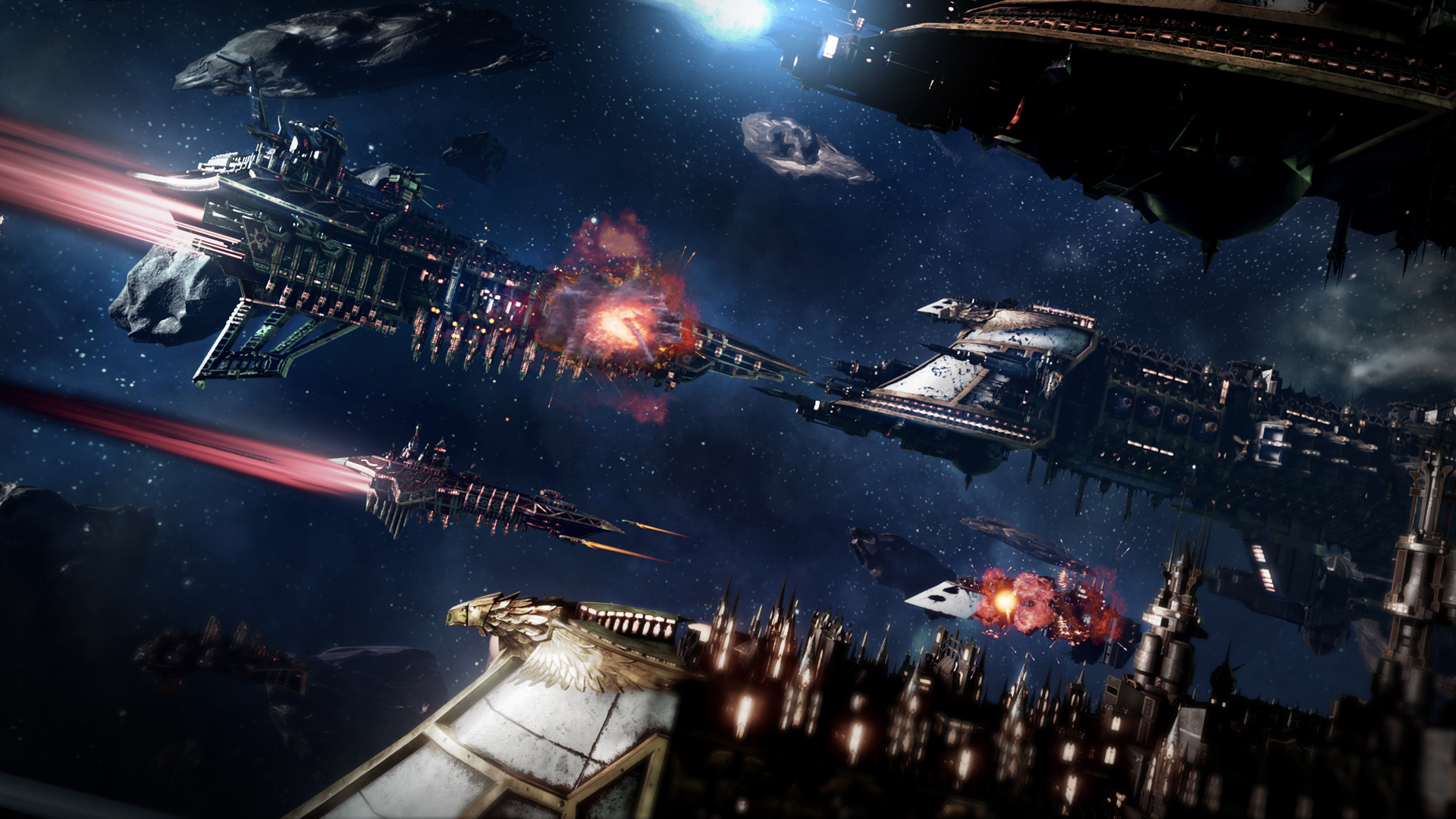
The Imperial spacecraft of Warhammer 40,000 are one of its most distinctive elements. Each one looks like someone painted Westminster Abbey black, chucked a prow on the end, and hooked it off into deep space. Battlefleet Gothic: Armada is an RTS where these stately, miles-long ships swing about on a 2D plane that emulates both a tabletop and the ocean. They do battle like it's the age of sail, complete with broadsides and boarding actions, though troops insert via torpedo rather than swinging over on a rope with knives between their teeth.
The other thing about Battlefleet Gothic: Armada that feels like the age of sail is the time scale. Even with the speed set to its fastest, getting into position at the start of an engagement takes a fair old while. And then by the time the fleets make contact, there's so much micromanagement it can feel overwhelming even slowed down. It's deliberately paced this way, tempting you into mistakes and collisions that will cost you a capital ship with the population of a city inside it.
💀 10. Necromunda: Hired Gun (2021)
Streum On Studio/Focus Home Interactive
Steam | GOG
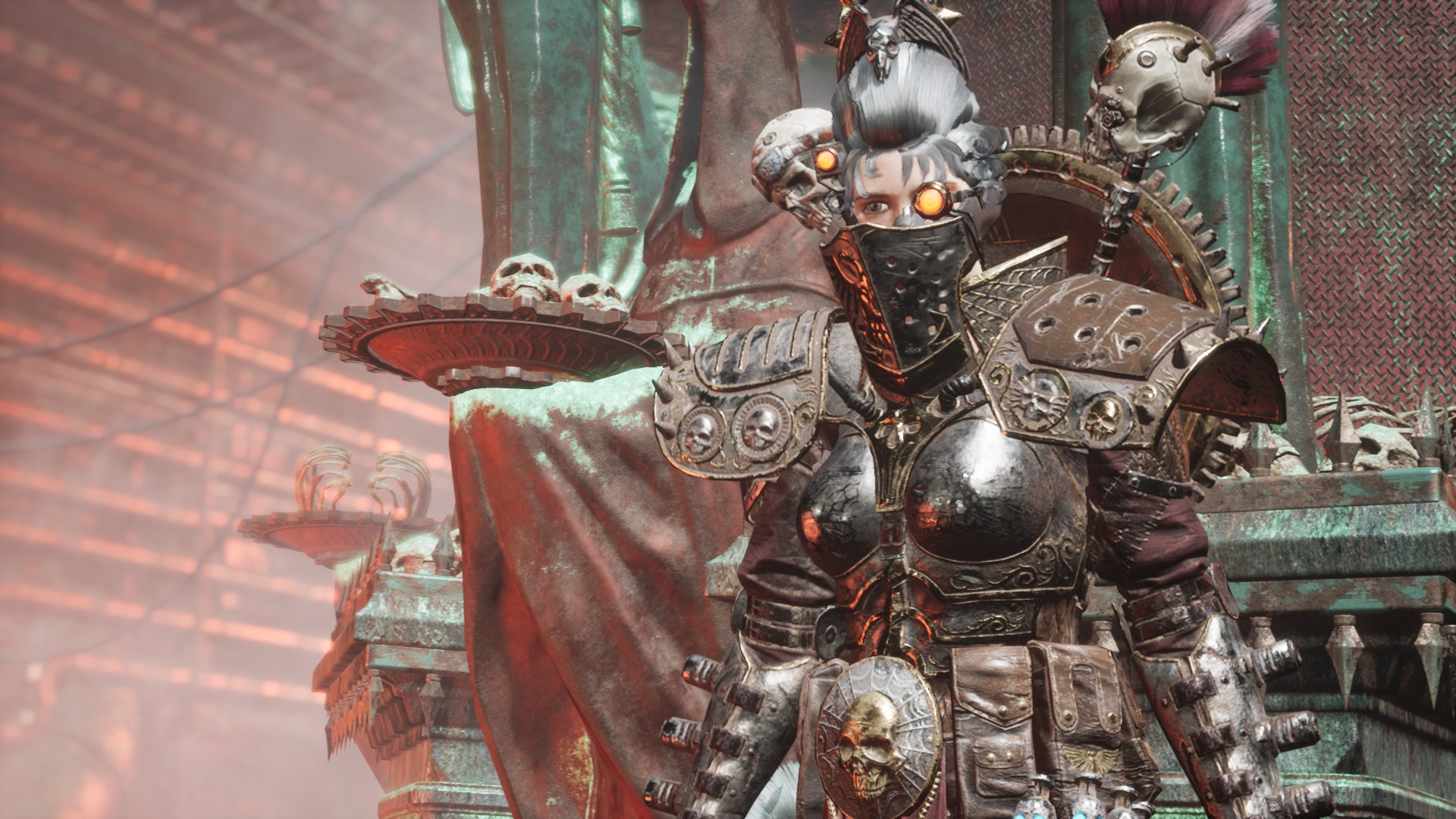
A singleplayer FPS that's part looter-shooter, where you'll find a bolter and five minutes later swap it for a lasrifle because it's a higher rarity tier. It's also a movement-shooter, with wall-running, dashing, sliding, a grapnel, and augmetics that let you double-jump, slow down time, and more. Even your dog has an upgrade tree. Each fight's a high-speed zip around a huge environment, abusing automatic takedowns for a window of invincibility and some health.
That said, the animations frequently look garbage and sometimes the whole thing breaks. There's a nonsense story that expects you to have read all the Kal Jerico comics (I have), and cared (I didn't). Side missions increase your rep with factions including genestealers and Chaos cults, separated by difficulty grade, but some are always hard and others where you can ignore the endlessly spawning enemies to zipline around completing objectives are always easy.
And yet, it's really fun. The combat's hectic, and you end up with so many abilities it's like Borderlands only you're playing all the classes at once. Every level is a perfect evocation of the setting, whether corpse-grinding factory or maglev megatrain, with dead-ass servitors controlling doors, cargo ships, and even the bounty board. One of the villains looks like Marie Antoinette gone Mad Max. If you like 40K enough to read this list, you'll probably like Hired Gun.
9. Rites of War (1999)
DreamForge/SSI
GOG

There are other Panzer General-alikes with 40K trappings, but this one was straight-up made in the Panzer General 2 engine. It's got the tactical depth you want thanks to a collection of pixel units who all work slightly differently, with every turn a stream-of consciousness where you're thinking things like, "If I attack this guy the heavy weapons will be able to support, but the jetbikes are in cover so they can make a pop-up attack, but then there's a unit who can attack and fall back in the same turn..."
The campaign lets you play as the eldar, colorful but stone-faced murder elves with psychic powers and a weapon that unspools a long monofilament wire inside someone's body to reduce their organs to soup. They can summon an incarnation of their war god made of superheated iron, and they charge into battle wearing harlequin pants. It's a crime more 40K games aren't about them instead of the same four chapters of space marines every time.
8. Space Hulk (1993)
Electronic Arts

The first of the many attempts to turn the Space Hulk board game into a videogame remains one of the best for two reasons. An innovative freeze-time mechanic lets you transition into turn-based mode where you can move your five space marine terminators around like you were playing on a tabletop—but gives you a timer. When it runs out, you have to play in real-time, bouncing between them in first-person and the map to keep your squad alive while genestealers boil out of the walls. Manage that for long enough and you earn more freeze-time, and the relief of switching back is intense.
The other thing it gets right is the atmosphere. Spinning wall fans chunk away, unknowable alien sounds echo down the corridors, and somewhere in the distance there's a scream. When marines die their screen goes to static, fuzzing out one by one. Plenty of videogames have been inspired by Aliens, but few of them do the panicky "game over, man, game over" moment as well as this. It's brutally difficult, but that's because it's not really a strategy game—it's horror.
(You'll need DOSBox to play Space Hulk today and it doesn't like version 0.74 for some reason, so download DOSBox-0.73 instead.)
7. Battlefleet Gothic: Armada 2 (2019)
Tindalos Interactive/Focus Home Interactive
Steam | GOG | Microsoft Store
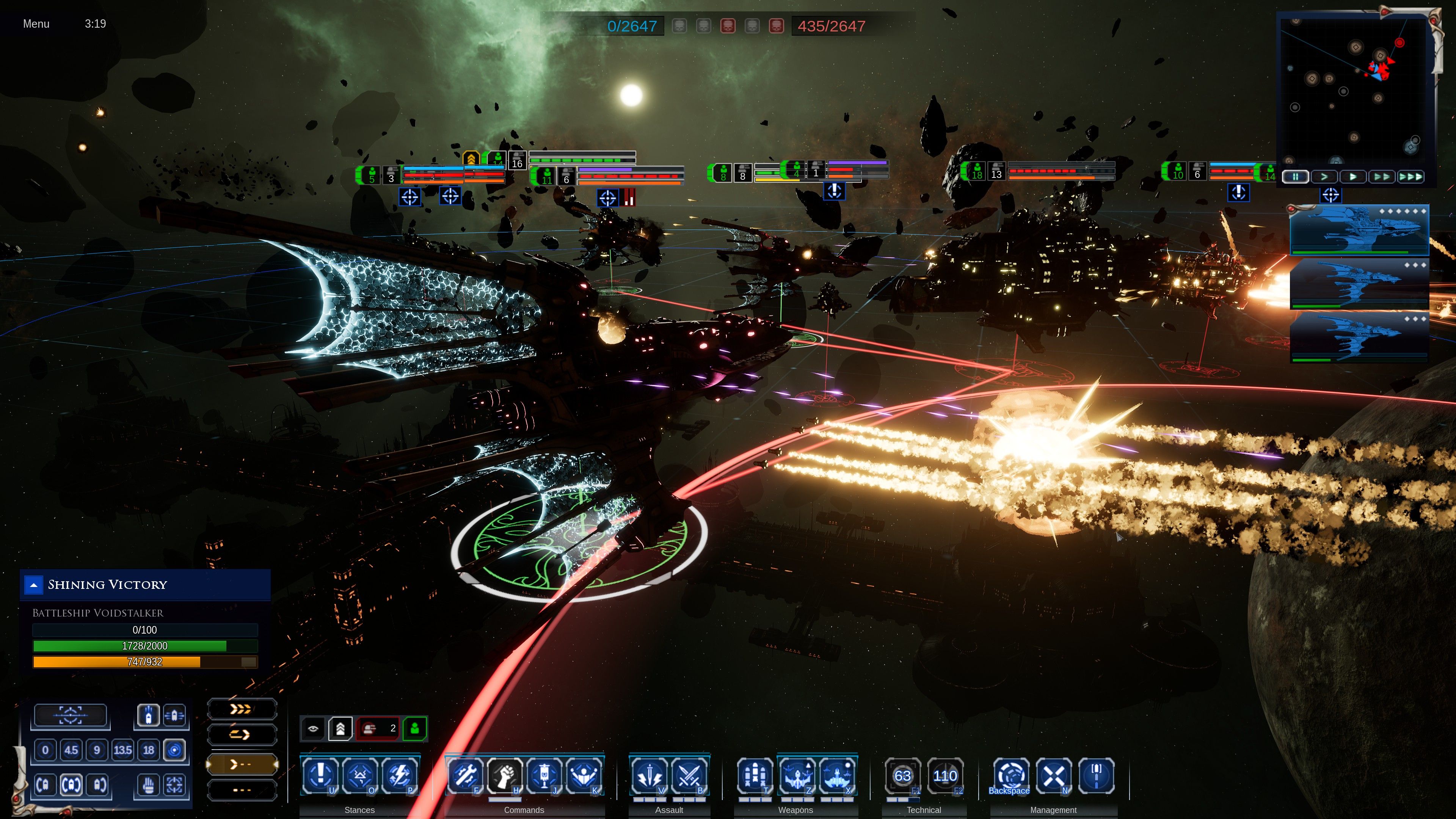
In the 40K universe faster-than-light travel is made possible by briefly hopping over to a universe next door called Warpspace, where distances are contracted. The downside to Warpspace is that it's inhabited by the Ruinous Powers of Chaos, gods who represent and are fueled by the dark urges of mortals, as well as their daemonic servants. Chaos wants to spill out of the Warp into realspace, and when they do you get places like the Eye of Terror, a hellish overlap at the edge of the galaxy. Near its edge is the Imperial world Cadia, a bastion that stood firm against multiple excursions led by the forces of Chaos—until the 13th Black Crusade, when Abaddon the Despoiler crashed a gigantic alien starfortress into it.
This happens several minutes into Battlefleet Gothic: Armada 2 while you're playing the prologue campaign. It's a hell of a spectacle. This sequel improves various small things about the spacefleet RTS game, adds campaigns from the perspective of the insectile tyranids and Egyptian robot necrons, and leaves its core of 2D sailing ship combat intact. The one big thing it changes is that sense of spectacle, understanding what we want to see is entire worlds falling and a galaxy in flames.
6. Dawn of War 2 (2009)
Relic Entertainment/THQ/Sega
Steam
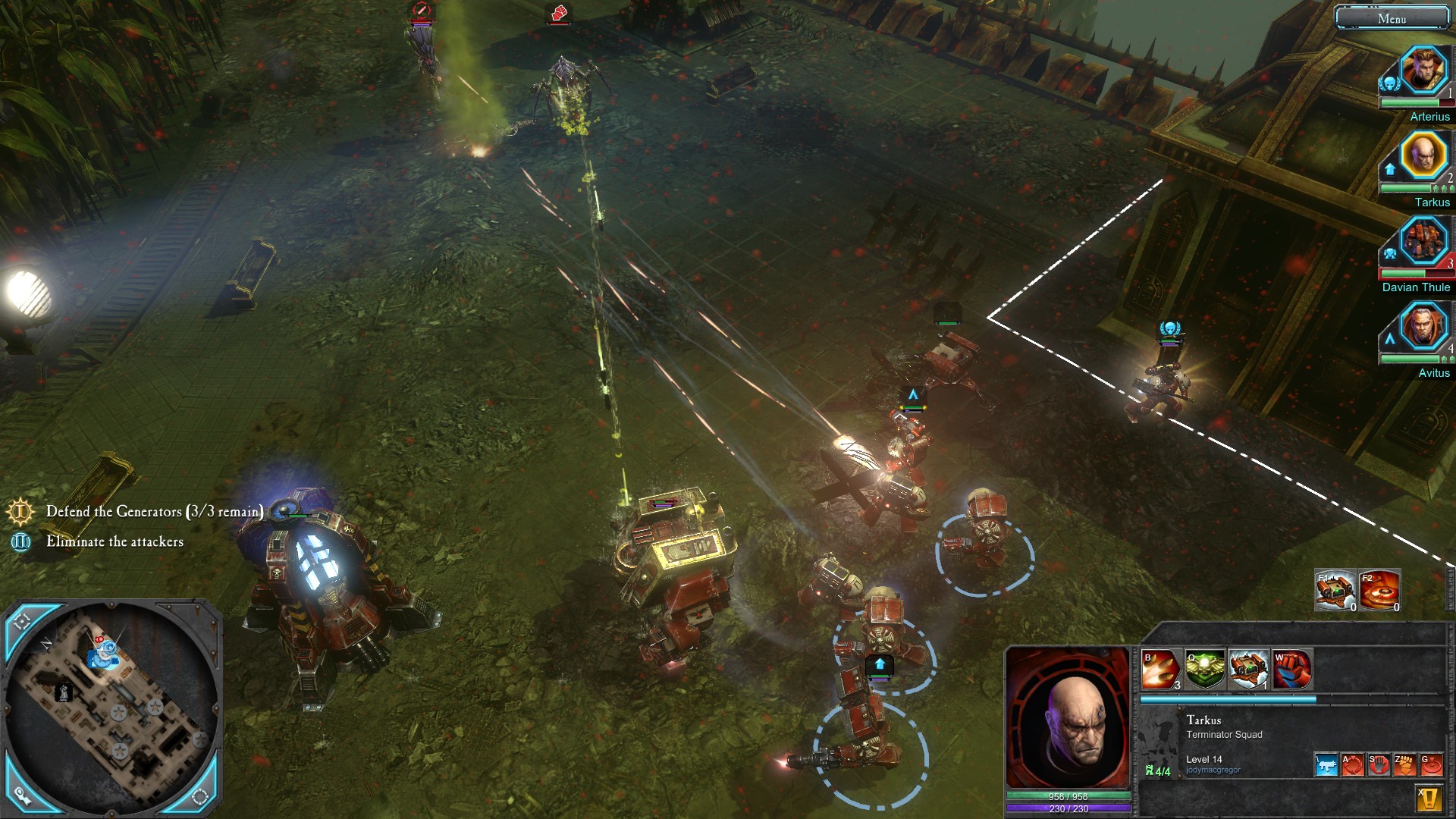
Where the first Dawn of War is about masses of tanks and a screen full of lasers, Dawn of War 2 gives you just four badasses, maybe eight replaceable squadmates, and a bunch of special abilities. It's not about researching at your base until you've put together an unstoppable force—most missions begin with you falling out of the sky, sometimes squashing a few enemies, and it's immediately on. A typical battle involves parking the heavy weapons and sniper in cover, charging in with your commander, then telling the assault squad to jump-pack over the top and setting off abilities as they come off cool-down.
The boss fights can be chores, but maps where you're on the defensive, outnumbered by hordes of tyranids or whatever, are excellent—both in singleplayer and the Last Stand, a three-player mode with waves of enemies and unlockable wargear. In a fair and just universe the Last Stand was more popular than Defense of the Ancients and inspired a whole genre and MOBAs don't suck.
The Top 5
5. Final Liberation: Epic 40,000 (1997)
Holistic Design/SSI
GOG
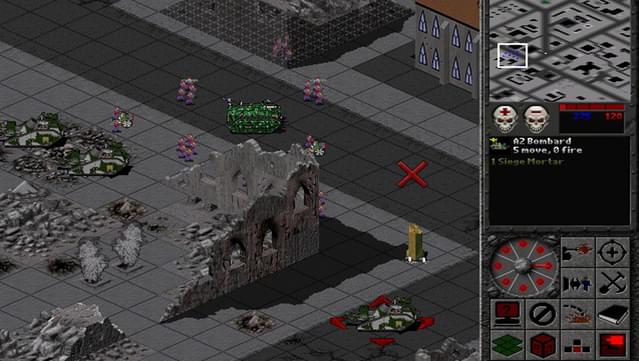
"Epic" is right. Final Liberation is a strategy game that gets the scale of conflict in the 41st millennium spot on, with a mixed force of Imperial Guard and Ultramarines having to not only pool their forces, but then unearth an entire lost legion of titans to repel an ork invasion on a planetary scale. The orks are faster and brutishly hard to put down in hand-to-hand, but you have artillery on your side and, as the Tyrant of Badab said, "Big guns never tire." Every turn is a cautious advance, trying to keep the speed freeks away from your bombards and flatten buildings with thudd guns just in case orks are about to pop out of them, while staying the hell away from the gut buster mega-cannon that obscenely juts out of the gargant's undercarriage.
The peak of the 40K games to come out of the 1990s, Final Liberation has two extremely 1990s things about it. The first is its heavy metal soundtrack, and the second its FMV cutscenes. Both are cheesy in exactly the right way, clearly being taken seriously by people unconcerned with the ridiculousness of what they're doing.
4. Space Hulk Tactics (2018)
Cyanide Studio | Focus Home Interactive
Steam | Microsoft Store
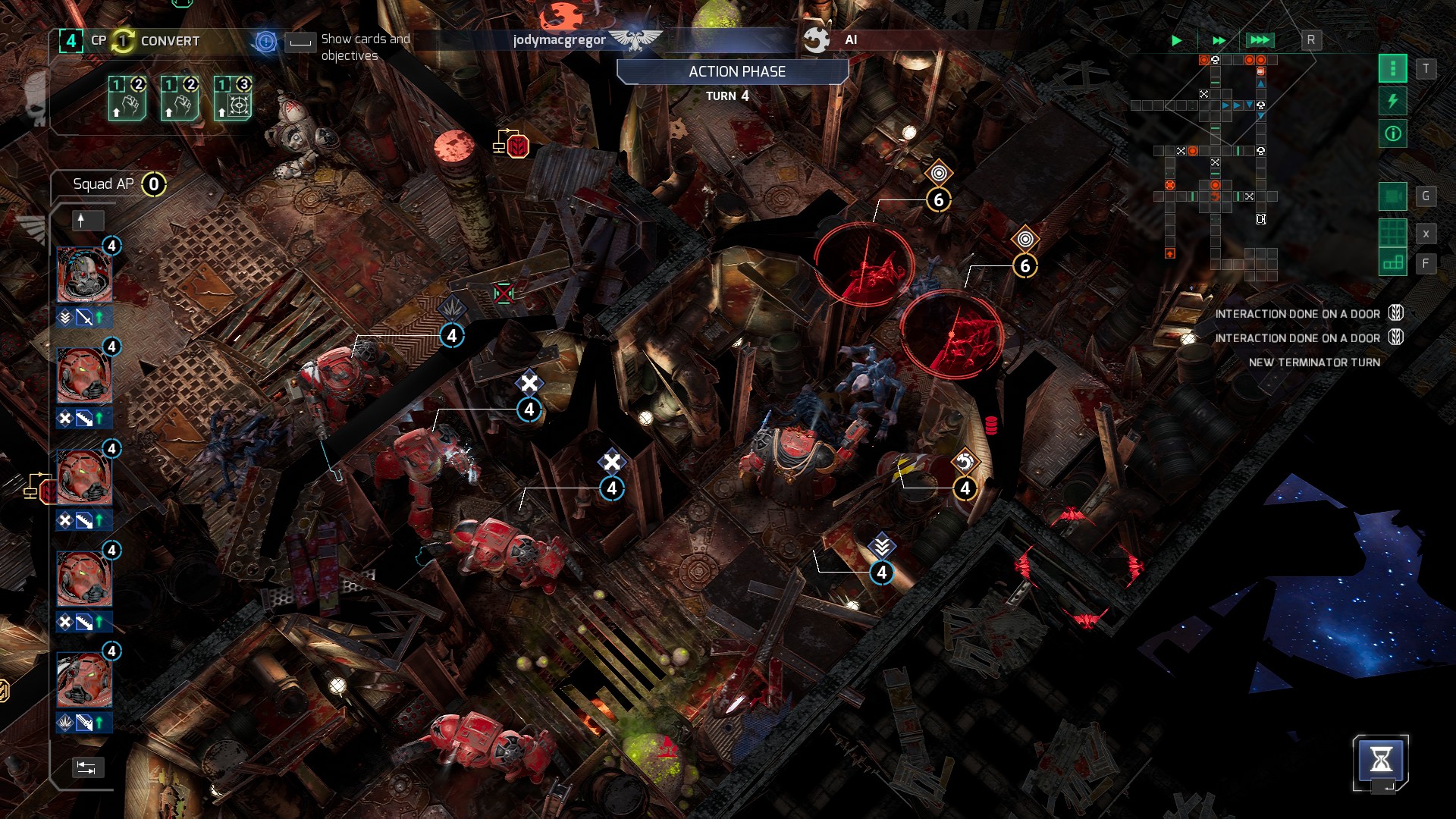
Criminally underrated because it came out after a string of middling games with the words Space Hulk in the name, Tactics is the best of them. It's an adaptation of the board game that understands what makes it fun—the asymmetry of five clunky walking tanks pitted against limitless numbers of speedy melee monsters—and also understands that it's even more fun if you can play either. Tactics has an entire genestealer campaign, and finally getting to be the aliens is a blast. It doesn't skimp on the marine side either, and the AI plays genestealers like a tabletop player would, lurking around corners until enough gribblies have gathered to charge an overwatching marine en masse, knowing his bolter's going to jam eventually.
Where Space Hulk Tactics makes additions to the board game's rules, like cards that give single-use bonuses, and a maze-like map of the hulk to explore, they're well-balanced and complement the base. In fact, they feel like they could be from one of Games Workshop's own expansions to the original. While you can control from first-person for that 1993 Space Hulk experience, played in isometric view this is finally the XCOM-but-with-space-marines everyone wanted.
3. Space Marine (2011)
Relic/THQ/Sega
Steam
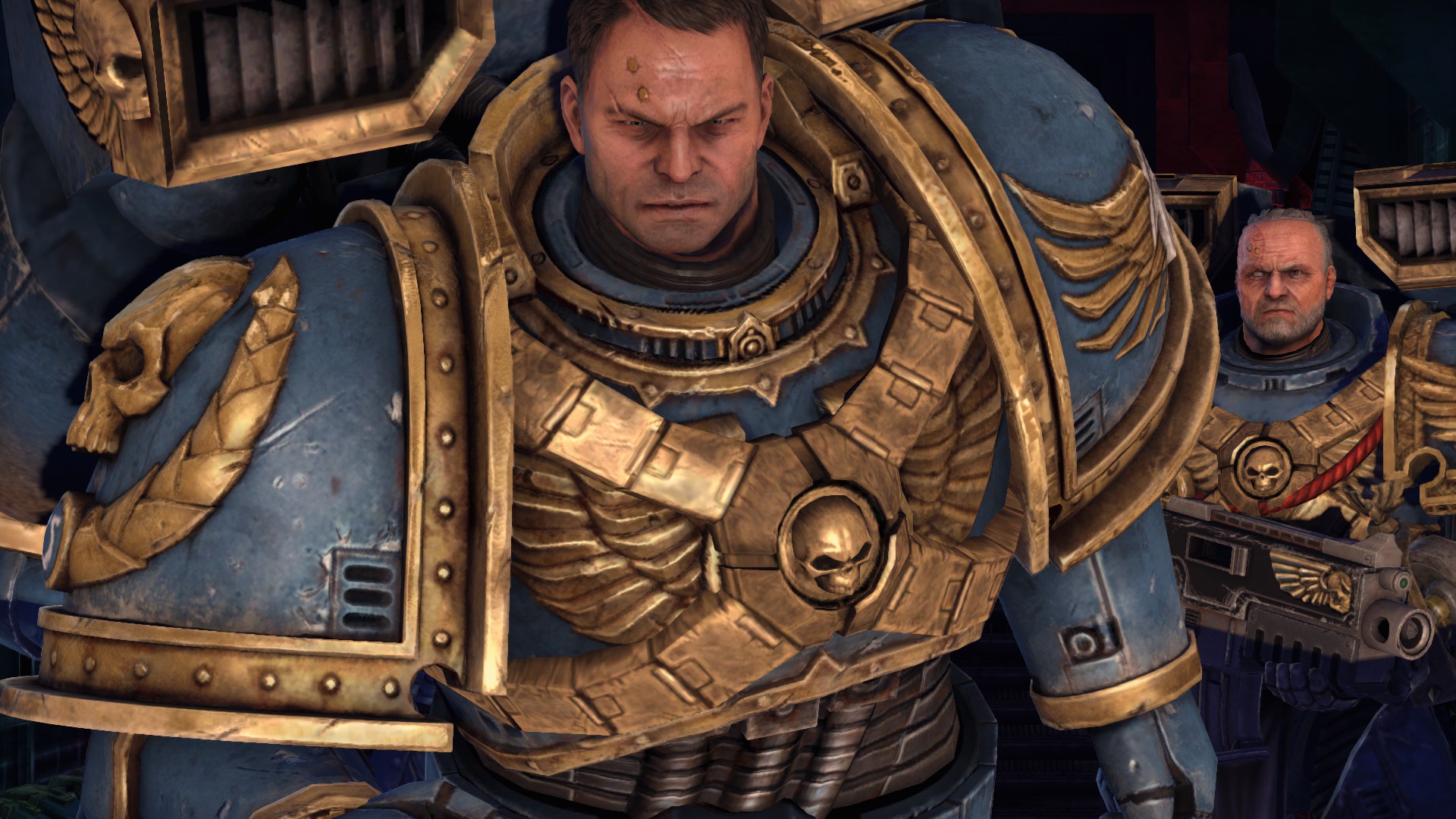
During the dark heyday of the third-person cover shooter, Space Marine was a revelation. Why would an armored superhuman need to crouch behind a waist-high wall? Space Marine isn't having a bar of that. You regain health by killing bad guys up close, charging forward with your chainsword or slamming down out of the sky thanks to the best jetpack ever. Each fight reminds you this is what you're genetically engineered to do, and early on there's a quiet moment where you enter an Imperial Guard base and wounded soldiers several feet shorter than you look up in awe. It nails the fantasy of being a space marine.
Specifically, of being Captain Titus of the Ultramarines (voiced by Mark Strong, a man born 39 millennia too early). The Ultramarines are the chapter of choice for 40K videogames because they stick to the book. They aren't like the Space Wolves with their fangs and Viking schtick, or the Blood Angels and their periodic descent into the Black Rage. You don't have to explain anything extra to an audience who don't know the setting with the Ultramarines. Because they're boring.
Space Marine lets them be boring so Titus has something to rebel against. His brothers follow tactics from ancient tomes. Titus jumps out of a spaceship to fight orks across the deck of a flying pirate ship—and that's the tutorial.
2. Mechanicus (2018)
Bulwark Studios/Kasedo Games
Steam | GOG
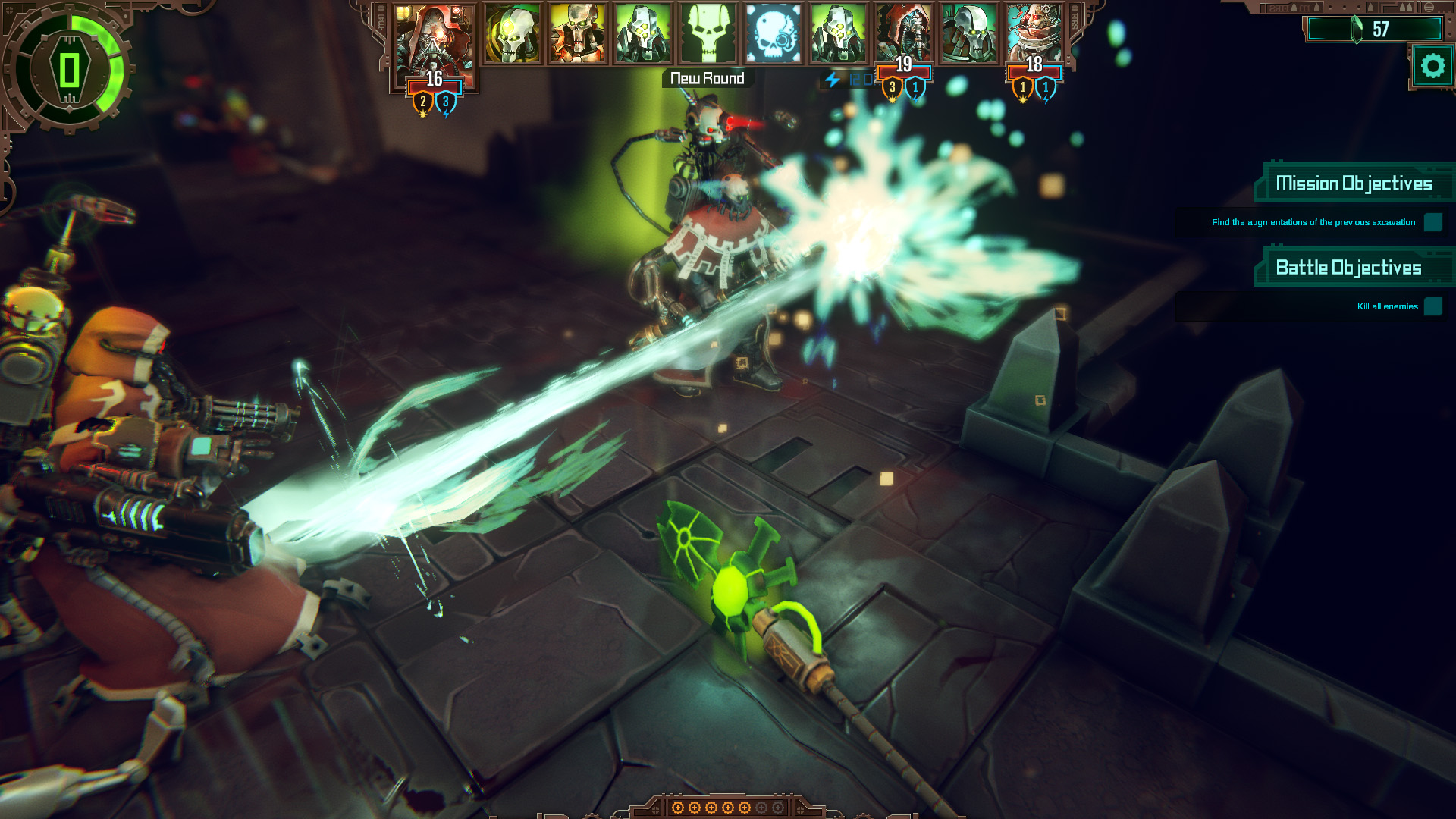
What Space Marine did for the third-person shooter, Mechanicus does for turn-based squad tactics. Your band of Adeptus Mechanicus tech-priests don't need cover. They've got disposable cannon fodder instead, servitors and skitarii soldiers to soak up the necron lasers. Those predictable enemies will only attack the closest target, and that closest target should be a replaceable cyberzombie rather than one of your leveled-up tech-priests.
The psychologically abnormal scientists of the AdMech see everything as a learning opportunity, and while their subordinates are dying they're off examining the architecture and sending servo-skulls to inspect alien glyphs, all of which gives you cognition points. These can be spent on extra movement or activating special abilities, and when you defeat a necron you get more of them, with a bonus for reaching the corpse within a turn to stand over them creepily watching the light in their artificial eyes go out. For science.
Spend those points right and you snowball, ending each turn in the right spot to earn more. Your robed worshippers of the Machine God zip around the necron tomb they're investigating with a force axe in one hand and a data tablet in the other, six more Doctor Octopus cyberlimbs whipping around just for fun. The AdMech normally show up as support in other games, but here they're the stars and everything from the way the mechanics accentuate their oddity, to the droning music, to the mechanical garble that serves as their voices fits perfectly.
1. Dawn of War (2004)
Relic Entertainment/THQ
Steam
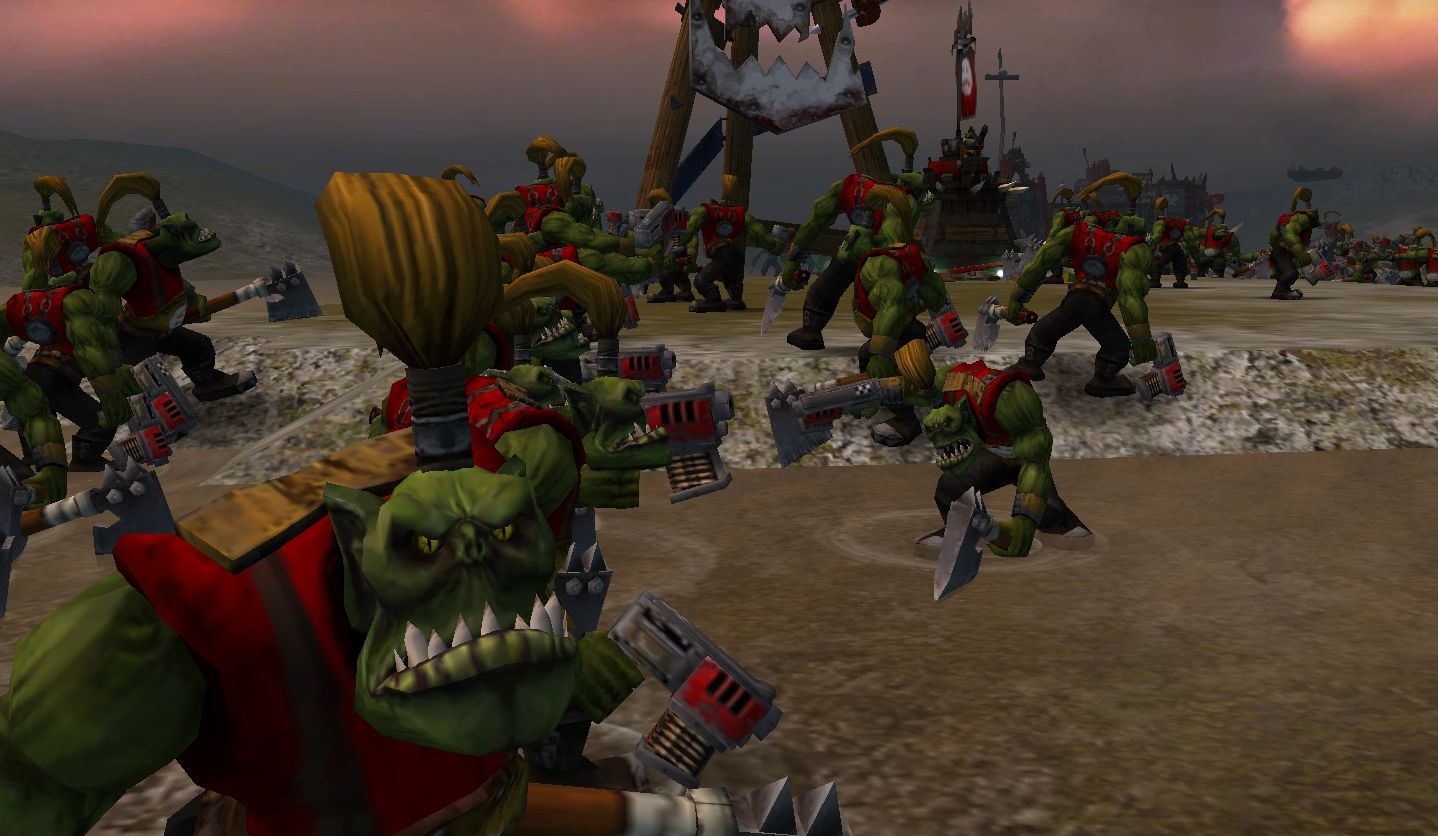
Because Dawn of War 2 ditched the base-building, its predecessor has become a standard bearer for fans of build orders who miss that particular flavor of RTS. The thing is, what made Dawn of War's base-building great was how downplayed it was compared to the RTS games that came before it. It's not about carefully managing walls and cranking out more gatherers than the other players so your economy can triumph. There's no gold, no spice, no vespene bloody gas. The main way to gather resources in Dawn of War is to kill for them.
Nodes are spread across the map and you might grab a couple peacefully in those early moments where everyone is scouting and constructing their first power plant, but sooner than you think it's going to kick off. Dawn of War is the RTS accelerated. Instead of marching individual soldiers out of the barracks one at a time and click-dragging them into control groups they come in ready-made squads, and if you want a squad to be bigger you can teleport more troops in while in the field. Same for reinforcements. Instead of constantly flicking back to the barracks to replace losses, you just teleport them in. This squad needs a missile launcher because they saw an armored vehicle over the next hill? Teleporter goes brrr.
Dawn of War is fast enough that you'll soon hit the unit cap and be leading a massive force that includes vehicles and robotic dreadnoughts who pick up individual enemies to fling around. Zoomed-out it's a glorious mess of lasers and explosions, and zoomed-in you'll see sync kills where someone gets pinned to the ground with a spear or has their head lopped off by a daemon. There is Only War and honestly it rules.
The base game's story builds to something unexpected, while the Winter Assault expansion is very much for fans of the Imperial Guard, but where it's really at is the Dark Crusade expansion's campaign mode, which has eight factions fighting over persistent maps where you return to one of your territories under siege and find all the defenses you built last time waiting. If that's not enough, the Soulstorm expansion has received the most love from modders and its Ultimate Apocalypse mod takes away the unit cap and ups the scale even more. It's 40K in its final form, eating worlds and firing missiles from a tank shaped like a church organ.
Warhammer 40,000: What to read next
Playing all of those Warhammer 40K games could keep you busy for 40,000 hours. But if you want to read more about some of our favorites and the 40K universe, here are some more stories.
- The best Warhammer 40,000 novels
- Major events in the Warhammer 40,000 timeline
- The best Warhammer 40K starter set guide, and beginners tips
- Why so many games fail at 40K, and why Darktide might succeed
- Why Necromunda is a big deal
- Dawn of War's modders have turned it into the ultimate 40K game
- Great moments: Going on the defensive in Dawn of War 2
- Great moments: Conquering Kronus in Dawn of War—Dark Crusade
- What's your dream Warhammer 40k game?
from PCGamer latest https://ift.tt/3d811kL
PC Gamer Ranked are our ridiculously comprehensive lists of the best, worst, and everything in-between from every corner of PC gaming.
The first edition of tabletop wargame Warhammer 40,000 in 1987 nailed the setting's tone right away. It described humanity's future in bleak terms, summing up what it's like to be a citizen of the Imperium like this: "To be a man in such times is to be one amongst untold billions. It is to live in the cruellest and most bloody regime imaginable."
The back cover blurb was no less pessimistic. "There is no time for Peace," it declared. "No respite, No forgiveness. There is only WAR."
Though frequently balanced by a tongue-in-cheek sense of the absurd, the various adaptations of Warhammer 40,000 that followed delighted in its grimness. In the board game Space Hulk, doomed space marines are beamed onto derelict craft in oversized power armor and then hunted by aliens through corridors they can barely turn around in. In the Eisenhorn novels, an Imperial Inquisitor, so scarred by torture he loses the ability to smile, makes compromise after compromise until he's indistinguishable from those he hunts. In the miniatures game Necromunda, the underclass at the bottom of the hive city live on a diet of mould, rats, and food made from the recycled dead. You can practically hear the writers striving to outdo each other.
At their best, videogames have taken the same glee in depicting this baroque world, its cursed inhabitants, and their awful fates. At other times they seem more like the cyberpunk COOL FUTURE meme with power armor on. And there are a lot of them. They can't all be winners.
The Criteria
Number of entries: 42. New and altered entries in the latest update are marked 💀.
What's included: Every Warhammer 40,000 game on PC, including those in the Horus Heresy setting, which rewinds the clock 10,000 years to depict the downfall of the Imperium and how it got so messed up.
What's not included: Games that were cancelled before full release like the MOBA Dark Nexus Arena, which was briefly available in Early Access. Standalone expansions like Dawn of War: Dark Crusade and Inquisitor—Prophecy are considered part of the original game, like regular expansions. Games in the Old World and Age of Sigmar settings are in a separate ranking of every Warhammer Fantasy game.
And now: Every Warhammer 40,000 game, ranked from worst to best.
42. Carnage Champions (2016)
Roadhouse Games

Carnage was a sidescrolling autorunner, Canabalt with a thunder hammer and a heavy metal soundtrack. At some point the server was taken offline and now this game—this entirely singleplayer game, I should note—no longer runs whether you got the free-to-play mobile version or paid actual money for the now-delisted Steam version. This, obviously, sucks.
41. Kill Team (2014)
Nomad Games/Sega
Steam

No relation to the tabletop game called Kill Team that lets you play 40K on a budget, this is a twin-stick shooter made with repackaged assets courtesy of Relic's Dawn of War 2 and Space Marine. The co-op is local only, which is a shame, and checkpoints before boss introductions are always annoying, but what really sinks it is the camera consistently swinging into the worst positions. You'll be staring at some pipes and a gantry while 15 orks shout the same recycled "Waaagh!" and murder you somewhere in the blackness taking up the rest of your screen.
40. Talisman: The Horus Heresy (2016)
Nomad Games

Games Workshop released the first version of Talisman: The Magical Quest Game in 1983. It was a race-to-the-centre board game, half of which you spent finding a talisman to let you access the middle of the board, and the other half not letting someone else steal it from you. Even if the other players didn't drag you down, the luck of the cards and dice would. It was fantasy Snakes & Ladders with PvP.
This videogame reskins it with The Horus Heresy, a prequel setting 10,000 years in 40K's past that's been the basis for a huge amount of novels, some of which are actually good. It's an even more desperate and serious version of Warhammer 40,000, completely at odds with a chaotic beer-and-pretzels game about chucking dice and laughing at your latest misfortune. In the original board game players got turned into toads on the regular. In Talisman: The Horus Heresy someone might find a card that gives them +1 to the Resource stat and consider it an exciting turn.
39. Space Hulk: Vengeance of the Blood Angels (1996)
Krisalis/Electronic Arts

This was the second attempt at adapting the board game Space Hulk, and the worst. It's a first-person shooter where you get to control a squad, except the first six missions of the campaign don't actually let you. Once you do take command, it's just pausing to drop commands on the map, which is both less innovative than its 1993 predecessor with its realtime/turn-based combo and less satisfying than having full control over them.
The big problem with Vengeance of the Blood Angels is that it came when 3D graphics and CD audio were new and experimental and rarely any good. Everything's stuttery and enemies awkwardly pop into rendered CG when they're close enough for a melee animation. The marines are chatty, but their dialogue is stitched together from samples. The way they bark "SAPHON / search this area for / AN ARCHIVED RECORD" and "I haven't found / AN ARCHIVED RECORD" at each other will make you long for their death, especially when BETH-OR! shouts his name with the same cadence every time he's selected. It's entirely charmless, and not worth setting up the virtual machine you'll need to get it running today.
38. Space Wolf (2017)
HeroCraft PC
Steam

40K + XCOM is such an obvious idea the Steam Workshop is full of mods for XCOM 2 that combine the two. Games that attempt the same have been a mixed bag. Space Wolf looks the part, even zooming in on dramatic attacks just like XCOM does, but it doesn't play the part as well.
The levels are tiny, which makes weapon ranges weird—a boltgun is only able to shoot four squares—and when new enemies spawn they're immediately next to you. Plus, every character has a deck of cards and the only way to attack is to play one of the weapon cards you've randomly drawn. Your marine can shoot a plasma gun when he's got the card for it, and then just forget it exists until you draw another plasma gun card. Depending on the luck of the draw, in the meantime he might suddenly have three different heavy weapons, somehow pulling them out of nowhere like they're in a bag of holding.
37. Storm of Vengeance (2014)
Eutechnyx

Storm of Vengeance is a lane defense game, sort of like Plants vs. Zombies only instead of spending sunshine to grow plants you're spending redemption points to make Dark Angels pop out of their drop pods. Actually, what it's more like is Ninja Cats vs Samurai Dogs, an earlier game from Eutechnyx. Storm of Vengeance is the same game, only with a progression tree so you can unlock frag grenades, a multiplayer mode, and 3D models of orks and space marines where the ninja cats and samurai dogs used to be.
36. Dawn of War 3 (2017)
Relic/Sega
Steam

If you like the kind of RTS where you manufacture a huge amount of troops then drag them together in a glorious blob, the first Dawn of War is for you. If you prefer a handful of units and heroes with their own special abilities to carefully manage, that is Dawn of War 2's whole deal. Dawn of War 3 tries to split the difference, and it's an awkward compromise. Elites all have different things they can do and some of your units have an ability or two, but there are long stretches where it feels like you should be using them yet there's nothing for you to do.
In the story campaign you alternate between marines, orks, and eldar one mission at a time, never playing any one group for long enough to get comfortable with them—almost every level feeling like a reintroduction of abilities and tech it expects you to have forgotten, as if the tutorial never ends. While the first two games are divisive and there are plenty of passionate defenders of each, Dawn of War 3 didn't end up appealing to anyone.
35. Fire Warrior (2003)
Kuju/Chilled Mouse
GOG

There are surprisingly few 40K first-person shooters, and not many games where you get to be the T'au, the mech-loving weebs of the setting. Fire Warrior isn't about mechs, however. It's a corridor shooter ported over from the PlayStation 2, a fine console that didn't have a single decent FPS to its name. (Red Faction fans, you're kidding yourselves.)
You'll have to turn auto-aim on to fix the busted mouse controls in Fire Warrior, but nothing will fix the boring guns or unreactive enemies. Two things elevate it, however. One is that the first time you have to fight a space marine he seems borderline unstoppable in a way that feels right, and the second is that Tom Baker recorded some glorious narration for the intro.
34. Eisenhorn: Xenos (2016)
Pixel Hero Games

The Eisenhorn novels are some of the better 40K books, hard-boiled Raymond Chandler detective stories about an inquisitor who finds himself making trade-offs with his principles while he hunts heretics and slowly comes to grips with the Inquisition's corruption. This adaptation of the first book did one thing right by casting Mark Strong as Eisenhorn. He's perfect, but the voice direction is weak and every cutscene is full of characters at wildly different levels of intensity.
Between the story bits is a mish-mash of third-person combat, collectible hunts, hacking minigames, that thing where you spin clues around to examine them—a bundle of features lifted from other games and artlessly glued together to fill the gaps. It feels like the kind of budget movie tie-in game that used to be commonplace, only this time it's a book tie-in.
33. The Horus Heresy: Betrayal at Calth (2020)
Steel Wool Studios
Steam

There are plenty of turn-based 40K games about squads of space marines jogging from hex to hex, but what makes Betrayal at Calth different is its viewpoint. You command from the perspective of a servo-skull, a camera that swoops around the battlefield and lets you appreciate the architecture of the Horus Heresy-era up close. You can even play in VR.
It's a cool idea. Unfortunately, you can feel where the money ran out. A limited number of unit barks repeat (often from a different direction to the acting unit), some weapons have animations while others don't, and the mission objectives occasionally leave out details you need to know. It started in Early Access and clearly didn't make enough money to keep it there until it was done. It's out now with a version number on it, but it doesn't feel finished.
💀 32. Warhammer Combat Cards (2021)
Well Played Games/The Phoenix Lighthouse
Steam | Microsoft Store

In 1998 Games Workshop released collectible cards with photos of Warhammer miniatures that had stats so you could play a rudimentary Top Trumps kind of game with them. It went through several iterations, and the 2017 version became a free-to-play videogame with painted 40K miniatures on the cards.
Don't expect Magic: The Gathering. You build a deck of one warlord and a bundle of bodyguards, keeping three of them in play, replacing bodyguards as they die. Each turn you choose whether to make a ranged, melee, or psychic attack and the relevant numbers get added up and damage exchanged. Tactical choice comes via buffs to the attacks you don't choose (which can pay off in later turns), and deciding when to play your warlord (a powerful card whose death means you lose).
Oddly, the only PvP is within your clan and mostly you play against AI that uses other players' decks. Not that Warhammer Combat Cards tells you this, or much of anything else. Good luck trying to join a clan even after you've leveled-up the appropriate amount, thanks to a designed-for-mobile interface.
31. Inquisitor—Martyr (2018)
NeocoreGames
Steam | Microsoft Store

Inquisitor—Martyr is pulling in three directions at once. It's a game about being an Inquisitor, investigating the mysteries of the Caligari Sector, chief among them a ghost ship called the Martyr. It's also an action-RPG, which means if it goes for more than five minutes without a fight something's wrong, and among the most important qualities your heretic-hunting space detective genius possesses are their bonus to crit damage and the quality of their loot. Finally, it's a live-service game with shifting seasonal content, global events, limited-duration vendors, daily quests, heroic deeds, no offline mode, and the expectation you'll replay samey missions for hundreds of hours every time there's a content update.
The action-RPG part is OK, Diablo with guns, but it doesn't mesh with the rest. Why would an Inquisitor spend so much time crafting new gear? Why do I need to collect a different color of shards every time there's a new "Void Crusade"? Every game wants me to collect shards of something and I'm just so tired.
30. Adeptus Titanicus: Dominus (2021)

Scale is important in a setting where billions die and nobody blinks. Mechs can't just be mechs in 40K. They're titans, god-machines up to 100-feet tall that stomp through fancy gothic megacathedrals without slowing down.
Dominus pits maniples of titans belonging to the Imperium and Chaos against each other in turn-based combat. You order a titan to move and a hologram appears at its end position; you choose who it's going to target and color-coded projections show which weapons will be in range. You commit and the titan spends 10 seconds stomping to its endpoint, firing continuously the entire time—just spaffing out barrages of missiles and lasers while walking through buildings.
You get a lot of odd-looking turns where most of the shooting is at impenetrable rocks that happen to be between titans, which isn't helped by the AI's tendency to shoot when it has no chance of hitting, or the cinematic camera's tendency to clip inside mountains. Another oddity: you don't plot out moves but simply pick where to finish. Sometimes you'll select a position within the movement radius and the hologram will instead appear on the opposite side of where you started because apparently you need to go the long way round and don't have enough movement after all.
Some missions give you a fresh maniple, but partway through the campaign suddenly half the missions have to be completed with the titans that survived the previous one, a fact Dominus doesn't bother to tell you.
29. Chaos Gate (1998)
Random Games/SSI
GOG

A squad tactics game reminiscent of Jagged Alliance or X-COM, but with less of a strategy layer. If the specific flavor of original X-COM is more to your liking than modern, hyphen-less XCOM then Chaos Gate may be your thing, but it does lack enemy variety. You're up against the forces of Chaos, which means Chaos Cultists, Traitor Marines, and half-a-dozen varieties of daemon. Meanwhile you're in charge of the Ultramarines, and while you can rename your troops and assign a limited number of heavy weapons per squad, after a while every battle feels the same. They drag on too, thanks to the Traitor Marines who litter most maps being able to survive multiple krak grenades and heavy bolter rounds.
28. Sanctus Reach (2017)
Straylight Entertainment/Slitherine
Steam | GOG

The classic hex-and-counter wargame Panzer General has inspired a lot of 40K games, and Sanctus Reach, which pits Space Wolves against orks, is certainly one of them. It's not bad, but it is basic. The objectives are often just capturing or defending victory points and only after three levels of those will you get something different like an escort mission or something, the story's a paragraph of text between maps, there's no strategy layer, and everything on the presentation side, from unit types to animation to level furniture, feels like the absolute minimum, where 40K should be all about maximalism. Other games do this identical thing better.
27. Gladius—Relics of War (2018)
Proxy Studios/Slitherine
Steam | GOG | Epic

Take Civilization 5 (or maybe Warlock: The Exiled, or Age of Wonders), then remove the diplomacy so it's all about war. Add some inspiration from RTS base-building, with separate barracks for infantry and vehicles around your city, then add heroes who level up and gain some quite Warcraft 3 abilities on top of that. Gladius is an intriguing strategy game Frankenstein, but it's got issues.
On enemy turns it'll show a random battle happening to an ally rather than your own troops being slaughtered. There's a storyline scattered about in quests, but to get anywhere with them you have to play an artificially long game or you'll defeat all the enemies and win by conquest before uncovering any of the tantalizing secrets it hints at. Finally, even with wildlife turned down to Very Low, the early turns of every game are spent fighting alien dogs and bugs and floating mind-control jellyfish for way too long before actually going to war with the other factions.
26. Space Hulk: Deathwing (2016)
Streum On Studio/Focus Home Interactive
Steam | GOG | Microsoft Store

A multiplayer co-op FPS, Deathwing is Left 4 Dead with genestealers. Although it launched in a terribly buggy and unoptimized state, an enhanced edition rerelease fixed some of its worst problems. Now it's a competent claustrophobic multiplayer game where you can dress up your terminators real fancy. As a singleplayer experience it's let down by daft AI, and even with friends you'll have to overlook whiffy melee weapons and shooting that feels more like you're turning on a hose than opening up with a mark-two storm bolter.
25. Space Crusade (1992)
Gremlin Interactive

Milton Bradley's follow-up to HeroQuest was a version of Warhammer 40,000 for ages 10 to adult, and Gremlin Interactive were once again responsible for the videogame. Like the adaptation of HeroQuest, it's a pretty direct replication—although for some reason the genestealers have been replaced by different aliens called "soulsuckers."
It's quite slow-paced and you have to choose between music or cheerfully rinky-dink sound effects because it can't do both at once, and of course it's lacking the board game's slick miniatures and card art. Nostalgia's a powerful thing though, and I adore these goofy pixel space marines.
24. Space Hulk (2013)
Full Control

This was our first look into the grim darkness of a near future where there are only PC ports of 40K games made for tablets. Space Hulk comes with all the limitations you'd expect from a game designed to run on an iPad Mini. This fine if unambitious version of the board game plays the same limited animations over and over, whether it's sprays of blood that appear sort of around genestealers as they're shot, or three red lines appearing in mid-air to mark a terminator falling to their claws. The way genestealers suddenly transform into a pair of bleeding leg-stumps when hit by an assault cannon is unintentionally hilarious.
Thanks to some patched-in improvements, like the ability to speed up terminators so your turns don't take forever, this take on Space Hulk ended up OK if all you want is a version of the board game with a singleplayer mode where you're the space marines.
23. Space Hulk Ascension (2014)
Full Control

After the negative response to the PC version of their previous Space Hulk game, Full Control retooled it into Ascension, giving it a welcome visual upgrade and customizable marines. More divisively it plays less like a board game, with reduced randomness, an upgrade system based on experience points, and tweaks to the way weapons work. Storm bolters gain heat when fired and jam when it maxes out, and instead of just filling an entire room or corridor with fire, the flamethrower has multiple modes of spray. And to make it look less like a board game there's fog of war, rendering the map dark beyond a tiny zone of vision. Some of the changes are fussy and don't add much, but it's a slight improvement overall.
22. Dakka Squadron (2021)
Phosphor Game Studios
Steam | GOG

Not many 40K games let you play aliens, but Dakka Squadron isn't just a game that lets you be an ork, it's committed to the bit. This is arcade aerial combat if Star Fox was violently Cockney and everything was soundtracked by wailing deedly-deedly guitar and shouts of "Dakka dakka dakka!"
It's maybe a bit too orky. Multiplayer is orks versus orks, and so is most of the singleplayer, though eventually you get to shoot down some Adeptus Mechanicus craft that look like flying boxes full of lasers, a few of the necrons' tin death croissants, and so on. Mostly though it's endless orks in World War II fighter jets with nose-mounted spikes laughing as they krump each other.
Missions drag on, with wave after wave of enemies and the same combat barks as you shoot them down, but fortunately a three-lives system was patched in so you don't have to re-do an entire mission because you got krumped at the end. I did turn down the guitars, though.
21. The Horus Heresy: Legions (2019)
Everguild Ltd.
Steam

It's the Horus Heresy era again, only this time in the form of a free-to-play collectible card game. Though it plays a lot like them it's not as flashy as the big names in the genre, with the quality of the card art being all over the place. But if you've got the time or money it's a solid enough example of the form, and if you've read the books and the phrase "the Fall of Isstvan III" makes you feel like a 19th century French campaigner hearing the word "Waterloo," then there's a stirring singleplayer campaign that will let you experience that in card game form.
20. Freeblade (2017)
Pixel Toys
Microsoft Store

I went into this with low expectations. A free-to-play adaptation of a mobile game, complete with loot boxes and multiple currencies and all that jazz? But Freeblade scores points for letting you play an Imperial Knight, a mech that's bigger than a house, and letting you color and customize your walker like you're choosing paints and decals for a miniature. It's a simple rail shooter, basically a version of Time Crisis where you're the size of Godzilla, and better than I thought it would be.
19. Aeronautica Imperialis: Flight Command (2020)
Binary Planets/Green Man Gaming Publishing
Steam

When your ace pilots in Aeronautica Imperialis: Flight Command kick the bucket, shot down by ork fighters in rustbucket planes made out of scrap in a cave, a commander slides onto the between-mission screen. "Your pilot numbers are depleted," she says, "You may call on reserves." There's no judgment in this because every randomly generated pilot is entirely disposable.
Flight Command is an aerial-combat simulator where you program your planes with maneuvers and then watch 10 seconds of dogfighting play out in real-time. It's somewhere between Sid Meier's Ace Combat and the simultaneous turns of Frozen Synapse. Those 10 seconds contain a bewildering amount of stuff, as one plane powerdives to avoid an attack from behind, another explodes, and one of your pilots pulls off a high-G turn then blacks out. Switching to theater mode, which lets you see all this at once rather than following each pilot in turn, makes it easier, though I could do with a simple way to scrub the timeline back and forth.
Planes can switch loadouts if you remove the default missiles, and pilots might gain skills if they shoot down enough enemies, but one fighter is much like another. Even top guns are replaceable in 40K.
18. Legacy of Dorn: Herald of Oblivion (2015)
Tin Man Games

Games Workshop published several pick-a-path gamebooks under the Path to Victory label, and this one was turned into a visual novel. If you ever read the kind of Fighting Fantasy/Lone Wolf/choose-your-own-adventure books that declared, "YOU can be the hero," that's what this is, only YOU are a lone space marine cut off from his squad on a space hulk, striving to find your battle-brothers.
Legacy of Dorn really gets across the oddness of a ship made out of the fused remains of multiple wrecks, and as you explore each section feels distinct, whether fungal and orkoid or sanctified by the Sisters of Battle. The turn-based combat is nothing to write home about, but the difficulty options include the ability to skip the boring fights and cheat as if you're leaving your fingers in the pages, as is only right.
17. Regicide (2015)
Hammerfall
Steam

Take chess, but make it 40K. That's Regicide, which you can play in classic mode using the boring rules of real chess, or in Regicide mode, which adds an initiative phase after every turn where pawns shoot boltguns and queens launch psychic lightning. While taking a piece the usual way is an instakill, complete with gorey duels reminiscent of Battle Chess, attacks in the initiative phase chip away at the hit points of your target. At first it feels like regular chess, but focus fire and combine the right abilities and you'll soon remove a bishop from across the board. It feels like cheating in the best way, like you have outsmarted the centuries-old game of chess itself.
There's a story mode, but some of its puzzle matches can grind to annoying stalemate halts. Stick to skirmish play and Regicide does a better job with its ridiculous concept than you might think.
16. Eternal Crusade (2017)
Behaviour Interactive Inc.
Steam

Initially billed as a Planetside-esque MMO with a persistent world for players to fight over, Eternal Crusade was scaled down in development. What eventually released was a lobby shooter that took the multiplayer combat from Relic's Space Marine and added vehicles, eldar and orks, as well as a co-operative PvE mode where four players take on tyranids.
Players who'd bought in early were disappointed at the reduction, but here's the thing: Relic's Space Marine was great, and so was its multiplayer. Building on that with missions where you might be defending a fortress while other players tried to smash through its gate in Predator tanks, or hovering over victory points as an eldar swooping hawk, made for some thrilling battles. Hardly anybody gave it a chance though, and even after being released for free it's still almost empty. If you can get together some people or luck into a match, Eternal Crusade is better than its reputation.
15. Deathwatch—Enhanced Edition (2015)
Rodeo Games
Steam

The Deathwatch are elite alien-busting marines who draw their recruits from other chapters, and this turn-based tactics game gives you command of a squad of them. You can have a Space Wolf and a Blood Angel and an Ultramarine, all hunting tyranids side by side.
Deathwatch is another game originally made for tablet, which you can tell by the way you get new wargear and marines out of random packs with lootbox sparkle, though they're earned through play rather than microtransactions. This Enhanced Edition for PC remastered the original's graphics and gave it a mouse-and-keyboard UI, though it could do with tooltips for the many buff icons each marine ends up with. If you want a budget version of a Firaxis-style XCOM but with space marines, it's a decent option.
14. Necromunda: Underhive Wars (2020)
Rogue Factor/Focus Home Interactive
Steam | Microsoft Store

Hive cities cram billions of people into illustrations of the class system someone drew winged skulls on. At the bottom of the hive, gangs who work for mid-level Houses fight over scavenger rights and who has the coolest mohawk.
Underhive Wars is another turn-based tactics game that isn't content to copy XCOM and instead has to go and mess with it. Every map's covered in ziplines and elevators, and gangers have enough movement to whip up and down them. Seen in over-the-shoulder third-person, the AI's moves are often baffling. Gangers run past enemies they could attack, deploy buffs for opaque reasons, pick up mission objectives then end their turn exposed, sometimes just jog on the spot for a bit.
And yet, if you ditch the story campaign after the intro missions and get stuck into the procedurally generated Operations mode, there's a fun game here. Though each gang has access to the same classes, gear, and only slightly different skills, over the course of an endless war of territorial pissing they feel like your own. Customization makes your leather-fetish wrestlers or leopard-print amazons look rad as hell, and successive injuries, bionic implants, and limb replacements turn them into individuals with stories.
13. The Horus Heresy: Battle of Tallarn (2017)
HexWar Games

HexWar Games has its own take on the Panzer General series called Tank Battle, with multiple iterations like Tank Battle: 1944 and Tank Battle: 1945. Battle of Tallarn reskins the WWII game to be about the largest tank confrontation of the Horus Heresy era. It's essentially Tank Battle: 30,000.
It's a particularly rock-paper-scissors wargame, with tanks, infantry, fliers, walkers and titans as counters to each other in specific situations, and terrain that's either damaging, hard-stopping, crossable only by fiers, or cover but only for infantry. Like all the Horus Heresy games and books it demands a dedication to the fictional history of Warhammer 40,000 as passionate as any WWII nut to get the most out of it, but if that's you then you probably already know Battle of Tallarn and are humming the theme tune right now.
12. Armageddon (2014)
Flashback Games/The Lordz Games Studio/Slitherine
Steam | GOG

Another take on the Panzer General turn-based hexgrid wargame, Armageddon is set on a hive world so polluted it's all fire wastes, lava canyons, and acid rivers, which the armies of the Imperium have to defend from hordes of orks. Each scenario is a puzzle where you'll have to decide whether to split your battlegroups or unite them in a single wedge, lock down the bridges or move into the bombed-out buildings, scout ahead with walkers or fliers, and so on.
There's DLC for various other conflicts that have played out on the well-named planet Armageddon, but skip the expandalone called Da Orks, which lets you experience the other side of the conflict. Instead of handing you control of a horde it makes you play a balanced force that feels like a green reskin of the humies.
11. Battlefleet Gothic: Armada (2016)
Tindalos Interactive/Focus Home Interactive
Steam | GOG | Microsoft Store

The Imperial spacecraft of Warhammer 40,000 are one of its most distinctive elements. Each one looks like someone painted Westminster Abbey black, chucked a prow on the end, and hooked it off into deep space. Battlefleet Gothic: Armada is an RTS where these stately, miles-long ships swing about on a 2D plane that emulates both a tabletop and the ocean. They do battle like it's the age of sail, complete with broadsides and boarding actions, though troops insert via torpedo rather than swinging over on a rope with knives between their teeth.
The other thing about Battlefleet Gothic: Armada that feels like the age of sail is the time scale. Even with the speed set to its fastest, getting into position at the start of an engagement takes a fair old while. And then by the time the fleets make contact, there's so much micromanagement it can feel overwhelming even slowed down. It's deliberately paced this way, tempting you into mistakes and collisions that will cost you a capital ship with the population of a city inside it.
💀 10. Necromunda: Hired Gun (2021)
Streum On Studio/Focus Home Interactive
Steam | GOG

A singleplayer FPS that's part looter-shooter, where you'll find a bolter and five minutes later swap it for a lasrifle because it's a higher rarity tier. It's also a movement-shooter, with wall-running, dashing, sliding, a grapnel, and augmetics that let you double-jump, slow down time, and more. Even your dog has an upgrade tree. Each fight's a high-speed zip around a huge environment, abusing automatic takedowns for a window of invincibility and some health.
That said, the animations frequently look garbage and sometimes the whole thing breaks. There's a nonsense story that expects you to have read all the Kal Jerico comics (I have), and cared (I didn't). Side missions increase your rep with factions including genestealers and Chaos cults, separated by difficulty grade, but some are always hard and others where you can ignore the endlessly spawning enemies to zipline around completing objectives are always easy.
And yet, it's really fun. The combat's hectic, and you end up with so many abilities it's like Borderlands only you're playing all the classes at once. Every level is a perfect evocation of the setting, whether corpse-grinding factory or maglev megatrain, with dead-ass servitors controlling doors, cargo ships, and even the bounty board. One of the villains looks like Marie Antoinette gone Mad Max. If you like 40K enough to read this list, you'll probably like Hired Gun.
9. Rites of War (1999)
DreamForge/SSI
GOG

There are other Panzer General-alikes with 40K trappings, but this one was straight-up made in the Panzer General 2 engine. It's got the tactical depth you want thanks to a collection of pixel units who all work slightly differently, with every turn a stream-of consciousness where you're thinking things like, "If I attack this guy the heavy weapons will be able to support, but the jetbikes are in cover so they can make a pop-up attack, but then there's a unit who can attack and fall back in the same turn..."
The campaign lets you play as the eldar, colorful but stone-faced murder elves with psychic powers and a weapon that unspools a long monofilament wire inside someone's body to reduce their organs to soup. They can summon an incarnation of their war god made of superheated iron, and they charge into battle wearing harlequin pants. It's a crime more 40K games aren't about them instead of the same four chapters of space marines every time.
8. Space Hulk (1993)
Electronic Arts

The first of the many attempts to turn the Space Hulk board game into a videogame remains one of the best for two reasons. An innovative freeze-time mechanic lets you transition into turn-based mode where you can move your five space marine terminators around like you were playing on a tabletop—but gives you a timer. When it runs out, you have to play in real-time, bouncing between them in first-person and the map to keep your squad alive while genestealers boil out of the walls. Manage that for long enough and you earn more freeze-time, and the relief of switching back is intense.
The other thing it gets right is the atmosphere. Spinning wall fans chunk away, unknowable alien sounds echo down the corridors, and somewhere in the distance there's a scream. When marines die their screen goes to static, fuzzing out one by one. Plenty of videogames have been inspired by Aliens, but few of them do the panicky "game over, man, game over" moment as well as this. It's brutally difficult, but that's because it's not really a strategy game—it's horror.
(You'll need DOSBox to play Space Hulk today and it doesn't like version 0.74 for some reason, so download DOSBox-0.73 instead.)
7. Battlefleet Gothic: Armada 2 (2019)
Tindalos Interactive/Focus Home Interactive
Steam | GOG | Microsoft Store

In the 40K universe faster-than-light travel is made possible by briefly hopping over to a universe next door called Warpspace, where distances are contracted. The downside to Warpspace is that it's inhabited by the Ruinous Powers of Chaos, gods who represent and are fueled by the dark urges of mortals, as well as their daemonic servants. Chaos wants to spill out of the Warp into realspace, and when they do you get places like the Eye of Terror, a hellish overlap at the edge of the galaxy. Near its edge is the Imperial world Cadia, a bastion that stood firm against multiple excursions led by the forces of Chaos—until the 13th Black Crusade, when Abaddon the Despoiler crashed a gigantic alien starfortress into it.
This happens several minutes into Battlefleet Gothic: Armada 2 while you're playing the prologue campaign. It's a hell of a spectacle. This sequel improves various small things about the spacefleet RTS game, adds campaigns from the perspective of the insectile tyranids and Egyptian robot necrons, and leaves its core of 2D sailing ship combat intact. The one big thing it changes is that sense of spectacle, understanding what we want to see is entire worlds falling and a galaxy in flames.
6. Dawn of War 2 (2009)
Relic Entertainment/THQ/Sega
Steam

Where the first Dawn of War is about masses of tanks and a screen full of lasers, Dawn of War 2 gives you just four badasses, maybe eight replaceable squadmates, and a bunch of special abilities. It's not about researching at your base until you've put together an unstoppable force—most missions begin with you falling out of the sky, sometimes squashing a few enemies, and it's immediately on. A typical battle involves parking the heavy weapons and sniper in cover, charging in with your commander, then telling the assault squad to jump-pack over the top and setting off abilities as they come off cool-down.
The boss fights can be chores, but maps where you're on the defensive, outnumbered by hordes of tyranids or whatever, are excellent—both in singleplayer and the Last Stand, a three-player mode with waves of enemies and unlockable wargear. In a fair and just universe the Last Stand was more popular than Defense of the Ancients and inspired a whole genre and MOBAs don't suck.
The Top 5
5. Final Liberation: Epic 40,000 (1997)
Holistic Design/SSI
GOG

"Epic" is right. Final Liberation is a strategy game that gets the scale of conflict in the 41st millennium spot on, with a mixed force of Imperial Guard and Ultramarines having to not only pool their forces, but then unearth an entire lost legion of titans to repel an ork invasion on a planetary scale. The orks are faster and brutishly hard to put down in hand-to-hand, but you have artillery on your side and, as the Tyrant of Badab said, "Big guns never tire." Every turn is a cautious advance, trying to keep the speed freeks away from your bombards and flatten buildings with thudd guns just in case orks are about to pop out of them, while staying the hell away from the gut buster mega-cannon that obscenely juts out of the gargant's undercarriage.
The peak of the 40K games to come out of the 1990s, Final Liberation has two extremely 1990s things about it. The first is its heavy metal soundtrack, and the second its FMV cutscenes. Both are cheesy in exactly the right way, clearly being taken seriously by people unconcerned with the ridiculousness of what they're doing.
4. Space Hulk Tactics (2018)
Cyanide Studio | Focus Home Interactive
Steam | Microsoft Store

Criminally underrated because it came out after a string of middling games with the words Space Hulk in the name, Tactics is the best of them. It's an adaptation of the board game that understands what makes it fun—the asymmetry of five clunky walking tanks pitted against limitless numbers of speedy melee monsters—and also understands that it's even more fun if you can play either. Tactics has an entire genestealer campaign, and finally getting to be the aliens is a blast. It doesn't skimp on the marine side either, and the AI plays genestealers like a tabletop player would, lurking around corners until enough gribblies have gathered to charge an overwatching marine en masse, knowing his bolter's going to jam eventually.
Where Space Hulk Tactics makes additions to the board game's rules, like cards that give single-use bonuses, and a maze-like map of the hulk to explore, they're well-balanced and complement the base. In fact, they feel like they could be from one of Games Workshop's own expansions to the original. While you can control from first-person for that 1993 Space Hulk experience, played in isometric view this is finally the XCOM-but-with-space-marines everyone wanted.
3. Space Marine (2011)
Relic/THQ/Sega
Steam

During the dark heyday of the third-person cover shooter, Space Marine was a revelation. Why would an armored superhuman need to crouch behind a waist-high wall? Space Marine isn't having a bar of that. You regain health by killing bad guys up close, charging forward with your chainsword or slamming down out of the sky thanks to the best jetpack ever. Each fight reminds you this is what you're genetically engineered to do, and early on there's a quiet moment where you enter an Imperial Guard base and wounded soldiers several feet shorter than you look up in awe. It nails the fantasy of being a space marine.
Specifically, of being Captain Titus of the Ultramarines (voiced by Mark Strong, a man born 39 millennia too early). The Ultramarines are the chapter of choice for 40K videogames because they stick to the book. They aren't like the Space Wolves with their fangs and Viking schtick, or the Blood Angels and their periodic descent into the Black Rage. You don't have to explain anything extra to an audience who don't know the setting with the Ultramarines. Because they're boring.
Space Marine lets them be boring so Titus has something to rebel against. His brothers follow tactics from ancient tomes. Titus jumps out of a spaceship to fight orks across the deck of a flying pirate ship—and that's the tutorial.
2. Mechanicus (2018)
Bulwark Studios/Kasedo Games
Steam | GOG

What Space Marine did for the third-person shooter, Mechanicus does for turn-based squad tactics. Your band of Adeptus Mechanicus tech-priests don't need cover. They've got disposable cannon fodder instead, servitors and skitarii soldiers to soak up the necron lasers. Those predictable enemies will only attack the closest target, and that closest target should be a replaceable cyberzombie rather than one of your leveled-up tech-priests.
The psychologically abnormal scientists of the AdMech see everything as a learning opportunity, and while their subordinates are dying they're off examining the architecture and sending servo-skulls to inspect alien glyphs, all of which gives you cognition points. These can be spent on extra movement or activating special abilities, and when you defeat a necron you get more of them, with a bonus for reaching the corpse within a turn to stand over them creepily watching the light in their artificial eyes go out. For science.
Spend those points right and you snowball, ending each turn in the right spot to earn more. Your robed worshippers of the Machine God zip around the necron tomb they're investigating with a force axe in one hand and a data tablet in the other, six more Doctor Octopus cyberlimbs whipping around just for fun. The AdMech normally show up as support in other games, but here they're the stars and everything from the way the mechanics accentuate their oddity, to the droning music, to the mechanical garble that serves as their voices fits perfectly.
1. Dawn of War (2004)
Relic Entertainment/THQ
Steam

Because Dawn of War 2 ditched the base-building, its predecessor has become a standard bearer for fans of build orders who miss that particular flavor of RTS. The thing is, what made Dawn of War's base-building great was how downplayed it was compared to the RTS games that came before it. It's not about carefully managing walls and cranking out more gatherers than the other players so your economy can triumph. There's no gold, no spice, no vespene bloody gas. The main way to gather resources in Dawn of War is to kill for them.
Nodes are spread across the map and you might grab a couple peacefully in those early moments where everyone is scouting and constructing their first power plant, but sooner than you think it's going to kick off. Dawn of War is the RTS accelerated. Instead of marching individual soldiers out of the barracks one at a time and click-dragging them into control groups they come in ready-made squads, and if you want a squad to be bigger you can teleport more troops in while in the field. Same for reinforcements. Instead of constantly flicking back to the barracks to replace losses, you just teleport them in. This squad needs a missile launcher because they saw an armored vehicle over the next hill? Teleporter goes brrr.
Dawn of War is fast enough that you'll soon hit the unit cap and be leading a massive force that includes vehicles and robotic dreadnoughts who pick up individual enemies to fling around. Zoomed-out it's a glorious mess of lasers and explosions, and zoomed-in you'll see sync kills where someone gets pinned to the ground with a spear or has their head lopped off by a daemon. There is Only War and honestly it rules.
The base game's story builds to something unexpected, while the Winter Assault expansion is very much for fans of the Imperial Guard, but where it's really at is the Dark Crusade expansion's campaign mode, which has eight factions fighting over persistent maps where you return to one of your territories under siege and find all the defenses you built last time waiting. If that's not enough, the Soulstorm expansion has received the most love from modders and its Ultimate Apocalypse mod takes away the unit cap and ups the scale even more. It's 40K in its final form, eating worlds and firing missiles from a tank shaped like a church organ.
Warhammer 40,000: What to read next
Playing all of those Warhammer 40K games could keep you busy for 40,000 hours. But if you want to read more about some of our favorites and the 40K universe, here are some more stories.
- The best Warhammer 40,000 novels
- Major events in the Warhammer 40,000 timeline
- The best Warhammer 40K starter set guide, and beginners tips
- Why so many games fail at 40K, and why Darktide might succeed
- Why Necromunda is a big deal
- Dawn of War's modders have turned it into the ultimate 40K game
- Great moments: Going on the defensive in Dawn of War 2
- Great moments: Conquering Kronus in Dawn of War—Dark Crusade
- What's your dream Warhammer 40k game?
via IFTTT

Post a Comment